Do you know what this is?
This, my friend, is one of the greatest examples of content marketing of all time.
I bet that when you hear “content marketing,” you think about blogs, Twitter, Facebook, and viral YouTube videos.
But content marketing has been around far longer than the Internet.
Why?
Because content marketing is all about storytelling, and humans have told stories for as long as they could speak. Our attention will always go to those who tell great stories.
That’s the reason why blogs like the one by Tim Ferriss did so well in 2017.
It’s the reason why movies like The Last Jedi did were so popular.
And it’s why Kevin Spacey was once a keynote speaker at a marketing conference.
When Hasbro and Marvel cooperated to launch their comic book series “G.I. Joe – A Real American Hero!” in 1982, their marketing strategy was simple.
They wanted to create what Kenner Toy Company’s Star Wars action figures already had: A rich backstory for their action figures.
Within two months of releasing the first comic book, about 20% of their target audience, boys between the ages of five and twelve, had two or more G.I. Joe toys. And at that point, the comic book only had two stories.
Seven years later, the series was one of Marvel’s strongest titles, and two out of three boys in the same age category owned at least one G.I. Joe action figure.
How’s that for using content to market a product?
A lot has changed since then, and what worked back in the 80s won’t necessarily work today. However, with new marketing channels like social media popping up almost daily, opportunity is knocking.
So, let’s take a look at what content marketing means now in my content marketing guide. Feel free to skip ahead if one topic catches your eye:
- Definition
- Overview
- Strategy
- History
- Why content marketing?
- Content mapping based on the customer journey
- Awareness stage content
- Consideration stage content
- Decision stage content
- Additional forms of content marketing
- Social media
- Live video
- Paid advertising
- A few extra tips and tricks
- Offline
- Online
- Hybrids
Definition
The Content Marketing Institute defines content marketing as:
… a strategic marketing approach focused on creating and distributing valuable, relevant and consistent content to attract and retain a clearly-defined audience — and, ultimately, to drive profitable customer action.
Their definition is solid in my opinion. But it could use some clarity.
It means that content marketing is a long-term strategy that focuses on building a strong relationship with your target audience by giving them high-quality content that is very relevant to them on a consistent basis.
Eventually, when customers make a purchase decision, their loyalty already lies with you. They will purchase your product and prefer it over competitors’ options.
In contrast to one-off advertising, content marketing shows that you actually care about your customers.
Today, more than ever before, people want to feel like you care about them. The world is louder and noisier than ever before, and attention is our most valuable resource.
Keep that in mind as we take a look at some of the different types of content marketing.
Overview
When Joe Pulizzi founded the Content Marketing Institute in 2010, I don’t think he knew exactly how spot-on he would be, let alone how successful CMI would become.
In 2017, they were one of the top resources when it came to content marketing statistics. And, they’ve created a great video overview of the evolution of content marketing:
Since the foundation of content marketing is simply high-quality content and storytelling, you can already see that the activity has been around longer than the term itself.
There’s still plenty to learn from those first offline content marketing activities that pre-date the Internet, social media, and the like.
However, any successful content marketing campaign today can hardly ignore the online part.
Because storytelling has changed over the years, the attention of people stretches to more places than a few years ago, and marketers have to make sure that they tell stories in the year we actually live in.
Well, now that you have a good idea what content marketing stands for, you might wonder, “How can I succeed at content marketing myself?”
I’m glad you asked!
There are three major categories where you can put content marketing efforts these days: online, offline, and hybrids.
The best way to learn how to be a great content marketer is by example.
That’s why I’ll show you 15 great examples of content marketing in all categories. Then, you can model them, tweak them, and apply them to your own businesses.
First, though, I’m going to show you how you can create a content marketing strategy. Then, you can use the examples at the end for inspiration.
Strategy
Tons of different content marketing strategies exist today.
In the beginning of the content marketing world, that wasn’t the case. At one time, marketers had few options. They essentially only had bandit signs, magazines, and newspaper ads.
Even in those days, however, they had a variety of different custom choices.
They could play with the words in their advertisements, the picture they showed, the placement of it, and the CTA.
In other words, although there were few content marketing methods, the options were still remarkably vast.
Today, more content marketing mediums and methods exist than ever before in the history of the world. That means that the number of strategies is even greater.
One online publication suggests using the “3D Content” model, for instance.
Basically, it’s three individual steps.
- Map the content to the pain point.
- Then use the right type of content for that problem.
- Finally, map the content to the buying cycle of the people who have that problem.
This strategy is a way to move the focus away from the marketer and to the person that the marketer is trying to reach.
That, after all, is an incredibly important step to take in your own content marketing strategy.
If your content doesn’t cater to the right people with the right problem that your product solves, then your content marketing efforts are all for not.
Of course, you’ll probably want to adapt this to fit your own audience and marketing theories.
Whatever the case, though, you should always start with your audience.
You must create content for that audience. Then, and only then, will the right people pay attention to you.
According to the source itself — Content Marketing Institute — here are the tips you should follow when creating a content marketing strategy.
Notice, in particular, this tip: “Your strategy should outline your key business and customer needs, and how your content efforts will address them.”
What does that mean?
It means that you need to understand your customers, prospects, and audience. Once you do, you can then create content that solves their problems and grows your business.
The ultimate goal of content marketing, of course, is to grow your business.
But again, you can’t do that unless you first attract paying customers.
In a world with social media, endless Internet space, self-publishing companies, and free graphic design tools, the strategies you can use to attract paying customers are as varied as the fish in the sea.
Here’s one list, for example, that Hubspot put together. It shows you just a few of the content marketing formats you can use.
So yeah, there are a ton of options.
But don’t get overwhelmed.
You’re here to learn about the benefits of each option and when to use which one. While there’s only one goal of content marketing (to increase business revenue), there are many ways to do that.
But before we can jump in and see how you can create your own strategy, you should first understand a bit of content marketing’s history.
Where did it come from? Why has it lingered? And why is it so popular today?
We’ll turn to those questions next.
History
How old would you guess that content marketing is?
When someone first asked me that question a few years ago, I thought it had been around for maybe 50, 70, or perhaps even 90 years.
But I was wrong. I was very wrong.
The year is 1732, and a man by the name of Benjamin Franklin just published the first version of his annual Poor Richard’s Almanack.
Why did he do it?
Did he do it for fun because he liked writing and expressing his ideas?
Nope, that wasn’t it at all.
He did it because he wanted to advertise the new printing business that he had created. He figured the best way to do this was to print his own Almanack and potentially encourage others to print there too.
According to Content Marketing Institute’s timeline, this is the very first occurrence of true content marketing.
That was almost 300 years ago.
I’m willing to bet you didn’t think that content marketing started with Benjamin Franklin in the 1700s. It’s possible that you’re more insightful than I was a few years back and you guessed it from the gate.
Most of you, though, probably didn’t.
And that’s because content marketing feels like a modern development.
But, while the term is fairly new, the practice isn’t.
For years, businesses and individuals alike have tried to attract attention by creating free or cheap content.
John Deere, the tractor company, did something similar to Franklin in 1895 when they produced a lifestyle magazine for farmers that they called “The Furrow.”
As you can see in the bottom left-hand corner, the magazine was complimentary.
Now, you might be able to argue that John Deere did this out of the kindness of their heart. Perhaps they simply wanted to help people and didn’t realize the effect that this publication would have on the business’s revenue.
More than likely, though, that wasn’t the case.
John Deere did this because they understood the heart of content marketing: what goes around comes around.
Or basically, if you produce free and helpful content for your target market, they will engage with you, spread your message, and probably even buy from you.
Jello-O was another company that recognized this early on in their marketing journey.
And here’s one from Safari Cards that ran for almost 10 years starting in 1978.
Content marketing efforts have been around here and there over the last few hundred years.
Of course, content marketing has now fully found its footing, and it’s taking the Internet by storm in articles like 15 Indispensable Content Marketing Tips and 25 Content Marketing Tips Every Marketer Needs To Know.
Even though the methods for content marketing have changed over the years, the formula for great content has stayed largely the same.
It’s the same formula for getting people to buy your products.
- Push on the person’s paint point.
- Agitate that pain.
- Solve their problem.
Here’s a more modern content marketing ad that implements that same strategy.
Now, of course, this happens in videos and pictures and blog posts and infographics.
As you can see, content marketing has come a long way in the last few centuries.
One shining example of modern content marketing is Blendtec’s “Will It Blend?” series on YouTube.
Here’s a video where they blend an iPhone. You have to see it to believe it.
Even the recent Lego Movie is a content marketing stunt.
Why do businesses do this kind of content marketing, though?
After all, they aren’t outright selling their products. They are generating attention, sure. But does that really matter?
The short answer is yes. In today’s world, attention is as good as dollar bills.
However, that’s only true if it’s the right attention.
And content marketing often does a remarkable job of drawing the eyes of people who care about your product and are willing to buy it.
Why content marketing?
OK. Content marketing is popular. Lots of businesses use it, and they’ve used it for hundreds of years.
But is content marketing right for your business?
Just because content marketing worked for early adopters, that doesn’t mean it’s going to work for your modern-day business. And just because massive B2B and B2C businesses use it today also, that doesn’t mean that it’s right for you.
To find out, let’s take a look at some recent and relevant content marketing data.
In the end, we’ll try to answer the question two questions: Is content marketing right for you? And should you invest bandwidth and budget into it?
Let’s start with the fact that the top priority for B2C content creators is to create more engaging content. Next in line is a desire to understand what kind of content is effective and what isn’t.
We must now ask ourselves why those are the top priorities.
Why do people want to create more engaging content, and why do they want to understand what kind of content is effective?
Most likely, it’s because these companies aren’t totally satisfied with their current content marketing efforts.
They probably feel that they are doing OK, but they also feel that they could do better.
And our suspicions are confirmed when you find out that 60% of B2B content marketers struggle to create engaging content and measure the effectiveness of their current strategies.
That doesn’t necessarily mean that content marketing is wrong for your business.
In fact, it probably just points to the fact that content marketing is incredibly competitive today.
Just consider, for example, that 70% of B2B companies planned to create more content in 2017 than they did in 2016.
People are trying to create more and more content every year because great, mediocre, and terrible blog posts, videos, and infographics are increasingly cluttering the online environment.
You could use that clutter as an excuse to not create content for your business.
Or, you could take it as a sign that content marketing is well worth your time. You’ll just have to invest more energy into it to stand apart from the crowd.
So the answer is still unclear.
But remember this: Even though a lot of businesses are struggling with their content creation, many also understand the current power of their strategies.
After all, just because those businesses are dissatisfied, it doesn’t mean that their content marketing efforts are falling dead.
It might just mean that those businesses have extraordinarily high standards for success.
In truth, paid advertising — sort of the antithesis of content marketing — is the most overrated tactic in the marketing world while blogging, SEO, and even social media are far less overrated.
And to further prove that content marketing is working for many businesses, consider that SEO and blog creation are the top two inbound marketing priorities for marketers.
Yes, the content marketing world is more competitive than it has ever been before. Every time you Google something, millions and millions of results present themselves.
And yet, you only see the top ten.
That means that searches are only seeing a few people for that keyword.
You, of course, get to decide if content marketing is a fit for your business.
But I hope you’ll see here that it’s a fit for almost every business.
Whether you’re a tractor company, a coffee house, or a blender manufacturer, there’s a content marketing strategy that can benefit your ROI.
But how can you stand above all of the online noise?
That’s what we’re going to talk about next.
Content mapping based on the customer journey
Have you heard of content mapping before?
If you haven’t, it’s about time that you do.
It’s remarkably valuable and important for your own content marketing strategy.
Content mapping is the act of understanding your audience so well that you can then create content for each stage of their journey toward buying your product.
As you well know, few people go straight from discovery to buying.
Instead, they usually discover your website, think about your product, spend a few months thinking, see a retargeting ad, and then buy.
At least, it goes something like that.
The point is that people take a lot of time to buy.
And traditionally, content marketing is a top-of-funnel strategy.
That is to say, content marketing builds brand awareness, engagement, and evangelism.
But in terms of conversions, revenue, and ROI… well, that’s hard to measure.
I’m definitely not saying that content marketing is helpless when it comes to meaningful business events. I’m simply saying that measuring the effectiveness of your content marketing strategy is particularly difficult.
Think about it.
People see your content, and then they know who you are. But if they don’t join your email list or opt into something, then you don’t know who they are.
That further means that you have no way to track how many people actually bought your product because they learned about your business from the content you created.
For that reason, the effectiveness of content marketing can be a bit ambiguous.
In a perfect world, content marketing strategy would guide people like this.
But you know as well I do that we don’t live in a perfect world.
We live in a world where everyone is a bit different, and the real reason that someone buys a product is often quite fleeting.
Did they buy because of the advertisement they saw or because of the article they read a week before?
It’s hard to tell.
Of course, us marketers can still work with what we have at our disposal. That ambiguity isn’t an excuse to ignore the identity of our customers.
Still, the better we know our customers, the more effective our content marketing strategy will end up being.
One of the best ways to do that is by creating a customer avatar. It should look something like this.
When you do that, be sure to be specific. You want to pretend that your entire audience is a single person with individual desires, goals, pains, and demographics.
Then, and only then, will your content do a far better job of talking to the people who matter.
You can’t do that if you don’t start by understanding who your ideal customer is.
The better that you understand your customers, the better you can make their buying journey from traffic to prospect to sale.
And that can directly impact your revenue.
In fact, 55% of consumers would pay more for a better customer experience, and 86% of B2B buyers would pay more. To further show the importance of this, 89% of people have stopped doing business with a company because of a poor experience.
If, on the other hand, you guide your prospects through the buying journey with helpfulness, kindness, and availability, they are much more likely to love you.
And when people love you, they tell their friends about you.
The point is that your customers want a remarkable experience, and your content marketing efforts can give that to them. But you have to understand the way that people buy and then create content for each stage.
There are three basic stages:
- Awareness
- Consideration
- Decision
And each stage requires a different kind of content marketing.
Awareness stage content
The first stage of a buyer’s journey is awareness.
They simply become aware of your business. They aren’t necessarily ready to buy yet or even ready to opt-in to your email list or newsletter. But because of the content you created, they now know who you are.
Why is that valuable to your business?
Naturally, if people don’t know who you are, they can’t join your audience or, most importantly, buy from you.
People must first learn about your business.
And for that, content marketing is perhaps your best ally.
For example, I conducted a search for “How to write a great blog post” on Google. This is what came up.
Which result would you click on? That’s right: the big Google snippet from HubSpot.
This shows you how powerful content marketing and SEO together can be for building brand awareness.
I don’t have to preach to you about how many people use Google to search or how many of those people prefer to click on organic results instead of paid results.
The reality is that people search like crazy. If you’re the one coming up on the SERP, then they’ll see your brand name over and over again.
Ideally, then, when they click-through to your content, your website and the content itself will continually impress them.
For instance, I went ahead and clicked on the HubSpot result to see what their blog post looked like.
It seems like they thought of everything. They offer free blog post templates and even a reading time estimate.
Both of those details help to flatter the person who arrives on the page.
You want to do the same thing.
After all, the last thing you want is to gain a great SERP position and then lose that position because of a high bounce rate.
Take a little extra time to create great content before publishing it.
How, though, do you measure what great content is?
In terms of brand awareness, pay attention to high-level metrics. These include things like number of readers, number of pageviews, top performing pages, engagement rate, time on site, and articles viewed.
That measuring stick will help you make sure you’re investing in the top-level things that matter.
You can, for instance, figure out which blog posts are performing the best and try to replicate that. You can also, however, find out which blog posts are performing worst and then figure out what went wrong.
The point is that the more you measure your successes and failures, the quicker you’ll have a top-of-funnel content marketing strategy that actually works to build brand awareness.
SEO is one great way to do that.
But, of course, content marketing is vast, and SEO is only the tip of the iceberg.
Social media content is another great way to build brand awareness, for example.
Why? It might simply be because people use social media sites religiously.
Since most people access their accounts every day or every week, the chances of people seeing your posts skyrocket.
That’s true even if you only post three or four times a week.
That simple feat will work wonders for building your brand awareness.
That’s is exactly why massive retailers like Dove use the platform to spread brand awareness and engage their audience.
Just remember that people don’t go onto social media platforms because they want to see your posts and buy your products (unless we’re talking about Pinterest).
For that reason, don’t get too sales-y.
Ideally, you want to spread your brand message and strengthen your brand identity without being too pushy about it.
Most people on social media are simply looking for entertainment.
Offer that entertainment, and people will appreciate your business and be more likely to buy from you in the future.
Oreo is another company that uses social media to spread its message. And since they are a big enough brand with a strong enough message, they can afford to be a bit more sales-y.
In other words, once your brand image is strong and people know who you are, they mind less when you talk about your products.
At first, however, you must prove to your audience that you care about them.
Only once they know that you genuinely care about them will they listen to your discounts, deals, and offers.
You have to focus on your brand image first and your sales second.
But you might be thinking, “Is all of that trouble really worth the time it will take to gain a loyal following?”
To answer that question, just take a moment to consider that the top content marketing tactic among B2B content marketers is social media content.
That’s because social media is incredibly powerful.
And every marketer knows it.
If you want to start building brand awareness for your business, focus your energy on SEO and social media.
People will see you, they’ll learn to trust you, and, most importantly, they’ll probably buy from you later on.
Consideration stage content
Once people become aware of your business, they’ll buy from you.
At least, that’s how you wish it worked.
But, of course, it doesn’t.
Truthfully, people have to hear about you, take time to consider, and then maybe they’ll buy.
While content marketing is remarkable at alerting people to the fact that your business exists, it’s also remarkable at guiding people through the consideration phase.
And every great salesperson knows that people are far more likely to buy when you guide them than they would be otherwise.
However, you can’t, or rather shouldn’t, use the same brand awareness tactics during the consideration phase.
In particular, pay special attention to newsletter sign-ups, number of returning visitors, form submissions, and resource downloads.
Basically, you’re trying to gauge the interest of your current prospects.
To do that, though, you first must create content to continue attracting people who are interested in your products.
Content like e-books, for instance, does a remarkable job of building trust during the consideration phase.
Why does an e-book do such a nice job during the phase of consideration?
Well, before people buy from you, they must trust you. And in order to trust you, they must become familiar with your stance on certain topics, your brand image, and even the tone of your business’s voice.
Only then can someone decide whether they trust you or not.
And e-book gives people something to latch onto. They can read about your stance on certain topics, your tone of voice, and even the way you present information.
Is the information reputable, for instance? If it is, then people will also believe that your business is trustworthy.
If it’s not, then they’ll attribute that same carelessness to your business.
A newsletter is also a great way to generate trust during the consideration phase of the buyer’s journey.
A consistent newsletter creates a sort of ongoing conversation with your prospects.
They might not be ready to buy yet, but if they sign-up for your email list, then they are likely considering it.
If you can stay in contact with prospects during the consideration phase, then you’ll have a far better chance of converting those people.
A newsletter does that with finesse.
Here’s another email capture overlay from iconiContent.
Different entrepreneurs and business people are using newsletters to stay in constant contact with their prospects.
That way, their business is top-of-mind when the person is ready to buy.
Of course, SEO also works for the consideration phase.
But it’s a different kind of SEO.
Long-tail keywords, in particular, focus on people who are in the consideration phase more than their shorter counterparts.
Think about it.
If you’re really interested in a product from a business, then you’ll search for something like “Buy shoes from Adidas” rather than “Shoes for sale.”
Plus, those long-tail keywords are less competitive, which means you have a higher chance of ranking for them.
To recap for the consideration phase, focus on long-tail SEO keywords, newsletters, and e-books.
With those, you’ll guide people through the consideration phase of the buying process rather than leaving them to their own devices.
In the end, you want to create content that builds trust and builds the prospect’s relationship with your business without being too sales-y.
At least, that’s your approach until those people reach the decision stage of the buying process.
Decision stage content
This is your favorite part of the buying process.
Namely, it’s the part where people actually buy.
They already trust your business, and they’re familiar with your products and what your business represents.
Now, it’s the time to make or break, push or shove, buy or ditch.
The person is either going to become a paying customer or fall into eternal obscurity.
This is the place where your opportunity pipeline, average size of orders, order frequency, and sales come into play.
To put it another way, it’s conversion optimization time in terms of your content marketing efforts.
And as that happens, you will want to target even longer keywords. Generally speaking, the longer the keyword, the more interested someone is in buying from you.
If the long-tail keyword includes your brand name, then people likely want to buy something specific from you.
Just consider this keyword: “how to start an e-commerce store.”
And what’s the first result?
It’s from Shopify.
If you know anything about Shopify, then you know that it’s an e-commerce platform where beginners and experts alike build their online stores.
For Shopify, then, they do well to appear for that search.
The people who type in that keyword are most likely ready to take the next step in their buying journey.
You just need to convince them that your business offers the best solution.
Shopify doesn’t let up when they try to convince visitors that they are that best option.
I clicked on that result and glanced through their blog post.
The first thing I noticed is that they have CTAs throughout the content to try and push people toward the buying line.
Here’s one of the those CTAs for a webinar in the middle of the content.
And then there’s another one in the middle of the content that encourages visitors to start their 14-day trial right away.
Would that CTA work for all types of content?
It probably wouldn’t.
In content that caters to people who are simply in the awareness or consideration stages of the buying journey, for instance, those CTAs would probably come off as too pushy.
But in this content that is supposed to cater to people who are ready to buy, the CTAs are perfect.
You want to strike the same chord that Shopify does.
Use your blog to create content that caters to long-tail, high-commitment keywords and then include compelling CTAs within that content.
Remember: these people are ready to buy. You just have to give them a little push.
Consider offering a discount, free trial, or special offer to do that.
Additional forms of content marketing
Now that you understand what makes content marketing powerful and how you can use it to map out your customer’s journey from awareness to conversion, we’re now going to talk about a few additional types of content that you should know about.
I’ve briefly mentioned some of these already, but they are worth mentioning in a bit more depth.
Social media
Perhaps social media is the most powerful type of content marketing in the digital world.
It gives free access to a massive amount of people within any target market.
And if you decide to run advertisements, you can choose where to show your face.
If you jump on the social media advertising bandwagon, you will be far from alone. Ever since marketers recognized the power of social media, they’ve flocked to the platforms in droves, trying to sell their products and reach their ideal customers.
Innocent Drinks is just one example of a company that’s using social media to its advantage.
In particular, they use social media to strengthen their brand image as a funny and enjoyable business.
In other words, they entertain their audience before expecting those people to buy.
Why do they do that, though?
Is that really a powerful marketing strategy? Does it actually work?
The short answer is yes, it does.
The reason is simple. People only buy from businesses that they connect with. And they often connect with businesses that make them laugh, cry, or share.
Here’s another post from Innocent that surely got a few laughs.
And here’s one more that will literally make you laugh out loud.
But, of course, Innocent is a notoriously silly brand. They’ve spent a long time building up their brand image that way.
And why not?
They sell juice. They really have nothing else to do but make people laugh, right? You, though, might not have that luxury.
Maybe you sell more formal products or find yourself more in the B2B marketing space.
Well, you can also use social media to entertain people and build your brand image.
Are you having trouble believing me?
Check out this example from Staples.
Staples uses its social media platform to have a good time with its customers. And that’s because the better experience you offer your customers, the more money those people will spend.
Here’s another post from Staples.
Here’s one final post to give you an idea of how they do it.
What’s the point?
Social media excels at promoting brands because it promotes relationships.
You can grow an organic following, drive traffic, and even encourage sales.
Once you have an audience of your own, then marketing to that audience over and over again becomes easier and cheaper than ever before.
But remember: they follow you because they like your content, not just your products.
So spend a little time entertaining them, and they’ll pay you back in cold, hard cash.
Live video
What if you could communicate with your audience over video in real time without using Skype or Google Hangouts or similar tools?
Oh, wait. You can.
It’s called live video.
Thanks to Facebook and smartphones, live video is now easier to use than ever before.
And I shouldn’t have to tell you about how powerful video content marketing is. For some reason, people love video content. They remember it better, and they even engage with it more.
It might be because of the extra transparency. It might be because it’s highly visual. Or it might be because people like seeing other human faces.
Whatever the case, people love video, and you can use that to your advantage.
In fact, 80% of people can recall a video advertisement they’ve seen in the last month.
But it’s not just consumers who love video content.
After all, since consumers love it, marketers love it more.
In particular, 52% of marketers name video content as the type of content with the best ROI.
If that doesn’t convince you, I don’t know what will.
Everyone loves to watch a compelling video and, as a marketer, that truth can make you millions.
But there’s one thing more powerful than video:
Live video.
In fact, viewers watch live video an average of three times longer than traditional videos.
Most likely, that’s because people love watching a video where the person on the other side of the camera has to be transparent. They might make a mistake, they can’t edit the video, and they get to see who the person really is.
It’s that kind of honesty and transparency that consumers crave.
And with live video, you can give it to them.
Live video is so popular and effective that Facebook has adopted it as a basic type of content.
And so has Instagram.
If you want to build a strong relationship with your audience, then consider running weekly live videos.
Do them at the same time every week so that people know when to hop on social media and tune in.
That way, you won’t be sitting there alone.
Paid advertising
Content marketing is primarily an inbound marketing tactic.
But, as with most marketing tactics, the lines are blurry somewhere in between inbound and outbound.
That’s because you can still create content and then drive traffic to it through advertisements.
Consider this ad from Grant Cardone, for instance, where he markets his business certifications and classes.
Basically, it’s just a glorified piece of content that costs money.
It’s inbound content meeting outbound marketing.
And it’s a great way to attract people to your website.
Now, you might be wondering why you would do something like that (especially if you’re giving away the content for free).
Why would you pay to drive people to your website who aren’t going to pay you in return?
Well, the answer is quite simple.
If you’re a new business with a small audience, then you might need to give your audience growth a boost by running advertisements to some of your more remarkable content.
If you don’t want to wait to grow an audience organically, then you can drive traffic to your content with paid advertisements.
Here’s another example of Shopify doing that.
Of course, Facebook isn’t the only place you can use that content marketing strategy.
You can do the same thing with AdWords.
Just consider this advertisement that drives traffic to an actual piece of helpful content rather than a landing page.
Of course, you can also just drive people straight to your landing page like these advertisements for baby clothes.
And this ad on Instagram does the same thing.
However you try to do it, it all truthfully involves content creation.
Even an advertisement, in a way, is a piece of content.
And paid advertisements are a great way to boost your traffic and sales if you’re in the beginning days of your business.
The first days are often the hardest. But with paid advertising, they don’t have to be.
A few extra tips and tricks
Before we dive into a ton of offline and online content marketing examples, I want to quickly show you a few necessary tips for your content marketing strategy.
It’s one thing to know what content marketing is, why it’s powerful, and even how to do it. It’s it’s quite another thing to actually know how to implement all of that information.
The first tip I have for you is to always pay attention to your analytics.
If you don’t know how your current content is performing, then you won’t be able to prevent blunders and iterate what’s working well.
Google Analytics will give you all of the necessary information.
The second tip follows closely to the first:
Once you know how all of your content is performing, run tests.
In particular, you can run A/B tests, which are remarkably powerful.
A/B testing is a way to test two pieces of content that are identical except for one factor. Maybe it’s the copy. Maybe it’s the CTA. Maybe it’s the title.
Whatever the case, A/B testing removes all the factors except for the one you want to examine, giving your test far more accurate results.
And it’s a great way to gather the information you need to iterate your current content marketing strategy.
As another tip, always keep your content schedule organized. Content marketers and creators are notoriously unorganized.
But that hurts your consistency and overall effectiveness.
Use a tool like CoSchedule to keep your content calendar in one cohesive location.
With an organized content schedule, helpful analytics, and regular A/B testing, your content marketing efforts will have a better chance of success.
After all, if you’re going to spend the time and budget on content marketing, you should make the most of it.
To further help you do that, now we’re going to look at over ten offline and online content marketing examples that will inspire your own strategy.
Offline
While the comic book industry is even more on fire today, that isn’t the case for all of the offline channels where brands used to tell stories.
But, we can translate all of the lessons that we learned from them to today in one way or another.
I’ll walk you through three examples from content marketing history and then show you their modern-day equivalents.
Offline example #1 – Comic books and blogs
Stan Lee and his crew created Marvel as we know it in the 1960s. They tried to tell the best stories that they could, combining visual content with a great story.
Their initial comics consistently sold millions of copies each month.
Marvel still dominates the comic book space today with not only a crazy market share of about 34% but also sky high order numbers for individual comic book issues.
And, even though the comic book industry made a whopping one billion dollars in 2016, it absolutely pales when you compare that to the sales of merchandise around those books.
In that same year, consumers spent a four and a half billion dollars on DC comic merchandise alone. And DC Comics isn’t even as big as Marvel.
Again: They made four and a half billion dollars from selling mugs, plastic figures, and t-shirts.
This number doesn’t include any money that they generated from movies or theme park entrance fees. That’s just from merchandise.
That’s mind-blowing.
That means:
- Good storytelling alone = a crapload of money.
- But good storytelling + great products = 80 craploads of money.
In DC Comic’s case, the story was the product, and then additional merchandise came along the way. And, their target audience gobbled it all up.
Even today, the story should come long before the product.
By far, the easiest way to tell great stories, around which you can build great products, is with blog posts.
You don’t need artists, painters, and a printing press to put out comics any longer.
If you’re talented at drawing or creating witty stories, you can outsource the other part for as little as five bucks and create high-quality content that attracts hundreds of thousands of readers each month.
All you have to do is release a strip a day.
Aggregating news around comics is just as valuable.
But remember that the content has to be valuable and relevant to your target audience.
That’s why brands like Excedrin celebrate major successes by developing a content marketing strategy for their headache pills.
On their migraine blog, Excedrin provides helpful advice for all migraine sufferers, free software to help track the source of the problem, and coupons for loyal customers and readers.
But, this kind of marketing strategy isn’t just for big brands. Single individuals can create huge audiences this way.
James Altucher is a great example. After blogging for five years and telling stories every week, his blog posts now routinely get thousands of social media shares.
Over time, he’s built a huge following, and all it takes now to sell his books or info products is an email to his 200,000 person email list.
Since running a blog costs next to nothing, it’s a great way to test if your stories are good already or if they need work. And you can always use it as a channel to provide helpful advice to the audience in your niche.
What’s more, you can do this before ever selling anything. You’ll build a loyal relationship with your audience before you have customers.
The result will be a long line of eager friends who are waiting to buy from you when you launch.
Offline example #2 – From soap operas to Netflix
Do you know why soap operas are called soap operas?
The first soap opera aired in 1930. The name of it was “Painted Dreams,” and it ran on the radio five days per week in the mornings and early afternoons.
The primary target audience was housewives.
The open-ended shows, which often presented a cliffhanger at the end of each episode, showed very dramatic elements that we previously only saw in operas.
While listening to the show, most of the housewives cleaned their houses. Naturally, the commercial industry jumped aboard the ship.
And can you guess what they advertised? You guessed it: They aired soap commercials during show breaks.
The stories sold the products, and activities that led customers to listen to more stories connected the products.
OK, so how about today?
Do you have any ideas of what’s similar to a soap opera today? Something with cliffhangers, binge-watching episodes, and opera-like drama?
Doesn’t that sound an awful lot like Netflix?
With nearly 100 million subscribers, the streaming service saw around $11 billion in revenues in 2017.
Several years ago, Netflix started producing its own original shows, such as House of Cards and Daredevil.
Instead of just bringing great TV shows and movies to users all over the world, the company decided to start telling its own stories to create more awareness for the brand and to expand like crazy in its first few years.
Netflix fully finances and produces Daredevil. And guess what: It’s a Marvel classic.
See how the content marketing wheel keeps turning round and round?
Note: Netflix has since gone on to turn more Marvel comics into TV shows, such as Jessica Jones and The Punisher.
Offline example #3 – From sneaky advertising tricks to viral commercials
When Hasbro released their comic book series around G.I. Joe, they faced a dilemma.
They wanted to run TV commercials to promote their action figure toys and comic books, which was a new concept.
But, TV regulations stated that toy commercials had to show the toys and could only include up to ten seconds of animation in order to not mislead kids into thinking the toys could do more than they did.
In order to circumvent this problem, they decided to focus on the story, not the product. They completely took out the toys and just promoted the comic book series.
Never before had a TV commercial solely promoted comics, and, thanks to bending the rules, Hasbro was able to show 30 fully animated seconds of material.
The original commercial even made it to YouTube.
But back then, TV commercials themselves were still working. In today’s advertising world, where our attention spans have shrunk to that of a goldfish, TV ads hardly capture us anymore.
What does spark our attention are viral commercials like the ones for the Super Bowl.
The commercial not only attracted millions of viewers during the Super Bowl itself, but it’s also become a viral video on YouTube, garnering hundreds of thousands of views and social media shares.
It was even in the top 10 of the Youtube Ads Leaderboard for 2017.
And here’s the best part: It will continue to do so. Every Super Bowl commercial the company creates will become an online asset and collect views for years to come.
Customers are happy because they can spend hours entertaining themselves, and Kia is happy because it nurtures the relationship with its target audience while the executives are sleeping.
Online
OK, so offline translates to online one way or another. But hasn’t content marketing really been all about the interwebs from the beginning?
Yup, it has.
Brands are huge on it, and some do a pretty good job.
And that’s why it’s time to look at some of the best examples of content marketing that originated online.
Online example #1 – The first viral video ever
Back in 2005, when Google Video was still Google Video and when people used to download videos to watch them offline, the first viral video came out.
The IT company LiveVault hired two independent marketers who decided to make an entertaining video for them that would stand out among IT professionals, who were their target audience.
After all, disk-based backup systems for corporate data were not very sexy, so they decided to go for a few laughs.
John Cleese, the famous actor and comedian, made sure that they got them.
Cleese demonstrates the severe consequences of a fictional disease called “Backup Trauma” and leaves the viewer with several options to continue exploring the company’s products and services by clicking buttons at the end of the video.
It was great content because it was funny and interactive, yet it still promoted their services.
Internet users downloaded the video almost 300,000 times in the first few months after its release – and remember, this was 12 years ago!
Of course, with so many people publishing so many videos daily, it’s gotten harder to stand out. But, if you create high-quality video content, you can still land a hit!
Online example #2 – What is code?
“What is code?” was an article that Bloomberg Business Week published in June 2015.
Let me rephrase that. It’s not an article.
It’s a book.
The article is the longest piece they’ve ever published. It’s 38,000 words.
Yet, they didn’t publish it as a book or a magazine, and they didn’t put it in a newspaper.
They just released it online for free.
It has animated graphics, chapters, sections, examples, notes, statistics, and all kinds of great stuff.
So, what was the result? It got 126,000 social media shares. That’s 127,000 people who now know about Bloomberg.
And, they’re likely to return to read more and eventually, one day, become customers by buying a magazine subscription.
Will it hurt them that they published it for free? I doubt it.
Pro tip: You don’t even have to go as nuts as Bloomberg. Look at this 7,000-word productivity guide on how to stop multitasking and focus on what matters.
As Brian Dean from Backlinko would say, it’s an example of an expanded list post.
You know all those long list posts, right? For example, consider this one from Boost Blog Traffic with 77 traffic building resources.
Instead of just listing out all of the items, adding detailed instructions to each list point will make your post ten times more valuable. And before you know it, you’ll have a great piece of long-form content.
Online example #3 – Infographics
You probably already know that I’m a huge fan of infographics. On Kissmetrics, we’ve published over 60 infographics to date.
They are a neat way to bundle up valuable information, summarize it, and present it in a clear way.
Remember that a solid content marketing strategy isn’t only about written content. It’s also about visual content, audio content, and more.
But, when should a prospective blog post become visual content? With infographics, it’s all about taking a subject that might be hard to explain in words and explaining it with images.
It’s easier to understand how much the click-through rates for email outgun those of Facebook and Twitter when you picture them as ounces in a beer bottle rather than just saying, “email has more engagement.”
They usually get lots of shares, and the reference section is a great way to load up on influencers who you’d like to connect with.
They’ll often be happy to share it with their audience, in their blogs, and on social media if you mention them.
Plus, when your audience has future questions about the same topic, who will they turn to?
They’ll turn to you.
“Let me look up that email infographic guy again. Maybe he has something on this as well.”
That’s exactly what you want.
Online example #4 – Podcasts
Podcasts are the radio of the 21st century, and they’re a very powerful content marketing tool. There is just less advertising and more value.
Most podcasts have a sponsor or advertise a product at the beginning and the end of the show. But that’s it.
People love them because they can listen to their idols and heros spill their guts about whatever topic they’re interested in.
When I listen to Pat Flynn interviewing Ramit Sethi, I deepen my relationship with both of them. I get to know them more, and since they’re helping me out, I’ll be happy to turn to them in the future for further advice.
Sometimes, I might pay for that advice, and that’s fine.
If you think interviewing people is a waste of your time, you couldn’t be more wrong. John Lee Dumas, the host and founder of Entrepreneur on Fire, is the best example to point to.
He has simply interviewed one entrepreneur per day and pressed publish. With that approach, he built a huge vault of recordings pretty fast and massive success right along with it.
Check out his income report from one month:
A multi-million dollar business from picking up a microphone and calling a bunch of people on Skype.
That’s not too shabby, huh?
Online example #5 – Guides and e-books
Think through this scenario with me.
You’ve done what few people do and have created an actual product for your online business.
You’ve created a sales page and sent it around. But, no one buys.
There’s something missing. Then, it hits you.
You need to learn copywriting.
That’s easy enough. You just turn to Google, right?
Well, as an experiment a few years ago, I searched for “learn copywriting.” When I did, Copyblogger turned up.
So I clicked onto that link. Now hold onto your chair because I’m going to show you what I saw next. Here’s what Copyblogger did:
That’s insane! It’s not a PDF or a blog post or some paid course.
It’s a series of 16 e-books plus a 20-part course.
And it was all for free!
You could learn copywriting in a week just from these guides. If you took these courses and ever ended up needing more, it’s highly likely that Copyblogger would be your first stop.
Online example #6 – Red Bull Stratos
This one’s remarkable. It’s like Red Bull created its own mini version of the Super Bowl.
On October 14, 2012, Felix Baumgartner, the Austrian skydiver, jumped out of a hot air balloon floating in the stratosphere. He basically jumped toward the Earth from space.
He fell down 24 miles at 843 mph. He broke Mach one and three while simultaneously breaking three world records: first human to break Mach one without any engineered vehicle, world’s highest balloon travel, and highest jump.
Never has anyone done this before.
And who was the sole sponsor of the event? It was Red Bull.
They made history – and marketed it.
Not only did the event get insane media coverage and buckets of social media activity, but it also went into the Guinness Book of World Records.
It was full of excitement and gripping suspense. It was entertainment at its best. And needless to say, it was a total home run for Red Bull.
Online example #7 – GoPro’s sponsorships
“Hey, when you surf that next huge wave, want to film it? Here’s a camera that’s perfect to do so!”
GoPro is wherever sports are, which is pretty much everywhere.
Since their product is a way to create visual content, the best way to market it is to show how great it is at doing what it does.
Therefore, they sponsor all kinds of events, athletes, and artists like surfers, bike racers, and even Rubiks’ cube jugglers.
Their marketing strategy is to hand people cameras and let them do what they do.
Their product does the rest for them. It basically markets itself.
All they have to do is edit the video and throw some cool music on top of it, and they get millions of views.
I don’t know how many times I watched that video. But I’m sure that you can guess what camera I bought when I went to Mexico on a vacation with friends.
Online example #8 – social media campaigns
The important part to get right when running a social media campaign is to respect the context of the platform.
You can’t publish a series of ten tweets on Twitter. No one would see them all.
If you decide to go all in on a specific social media channel, be sure that you know how users use the platform.
Disney decided to run a Twitter campaign. But on Twitter, you only have a few seconds to catch your audience’s attention.
They did a great job at that by playing a pun on the way that the platform works.
Since Twitter limits tweets to 140 characters per message, Disney set out to create the “Ultimate Twitter Hashtag in 140 Characters.”
Way to go, Disney.
That’s Disney characters. They rounded up 140 of their performers to form a hashtag symbol, snapped a photo of it, and tweeted it out.
And here was the result: over 2000 retweets and 3000 favorites to date.
So, be sure to research the social media platform that you’re running your campaign on. It’s not only about providing valuable, high-quality content, but also providing it in the right form.
Online example #9 – British Airways and the live billboard
Remember how I talked about billboards in another guide?
Well, they still work if you use them properly.
British Airways came up with a really cool way of doing so. They installed a video billboard in London’s Piccadilly Circus that showed a kid who would point up to the sky every time a BA plane flew over.
Not only that, but the billboard would then also show the flight information and number.
The #lookup campaign has reached 350 million views.
Imagine seeing your sister’s plane as it leaves for a trip to Europe and having that kid point to it.
Doesn’t it make you think, “Hm, wouldn’t it be cool if my family could see my next flight like this, too?”
British Airways just got to you. All it took was a few LEDs, a creative way of packaging flight information, and the natural sense of wonder that flying still carries today.
Online example #10 – Ford’s text message marketing campaign
Don’t you dread going to an annoying car dealership where you expect that a sleazy salesman will paint you into a corner the second you get on the lot?
Well, that doesn’t have to be your experience anymore. A Ford dealership offered a “text-for-more-info” service for its customers. The customer would see the poster, text FORD at a certain number, and choose the model that they wanted to learn more about.
It’s a simple matter of providing information to save you some time. Don’t we all value our time?
What a nice change of pace it is to have a company not shove their products in our faces but instead give us the time to think about it for as long as we want!
Although Ford would follow up three times, in case you didn’t respond, it’s still a great way of giving me control over the experience.
This marketing strategy landed Ford a 15.4% conversion rate.
Hybrids
Finally, I want to show you two examples of what I call hybrid content marketing. I already showed you that online translates to offline and vice versa.
Some companies already use this principle and build their content marketing strategy around that.
You can use online as a gateway to offline and the other way around.
For example, you could use social media to drive awareness to an offline event or run an offline event and take it online.
Hybrid example #1 – Gary Vaynerchuk calls fans
Gary is a true content marketing master.
This guy is always out to provide value. Plus, he hustles about 27 hours per day.
When he was on his way to an interview with Chase Jarvis in 2013, he had a few minutes to spare while going from the airport to the studio.
He tweeted out a simple message that invited his fans to text him their cell numbers so that he could call them.
Out of thin air, it seems, he created a mini offline event and used his massive 1.65 million Twitter following to drive awareness to it.
Within seconds, he had several people respond. He called each of them for about a minute or two and then moved on to the next one.
It was a simple gesture, but, as Gary later explained, a short call can get him another loyal soldier in his army for life.
And I don’t need to show you that now, in 2018, the man is basically a self-made celebrity.
Hybrid example #2 – tweets during a show
The show that Gary did was called Chase Jarvis Live, and it went on for 90 minutes.
During the live show, they not only took questions from the in-studio audience, but they also asked viewers to submit questions via Twitter using a specific hashtag.
Instead of a boring offline event for an exclusive minority, they suddenly had a worldwide show that anyone could participate in.
Just the chance of having Gary answer my personal question makes it so much more likely for me to engage with the show, listen closely, and actually process the value that it’s giving me.
The hybrid form of content strategy is becoming more and more popular with apps and social media platforms like Periscope, Snapchat, and others. They make it easier than ever to take online offline and the other way around.
Conclusion
That was lots of examples. And these are only the tip of the iceberg. I hope they give you a good idea of what it takes to be a good content marketer.
What’s more, I really hope that you see that it doesn’t take a huge marketing budget. Today, anyone can use content marketing to their advantage.
The world gets noisier each day. Before long, we will all have to utilize content marketing if we want to remain successful.
Those who focus their energy on telling good stories, no matter the platform or context, will win in the long run.
Yelling louder won’t help you anymore. Only yelling better things will.
So what’s your story? Are you using content marketing already?
If you have any other great examples I’ve missed, please tell me about them in the comments.

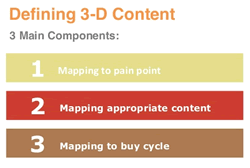
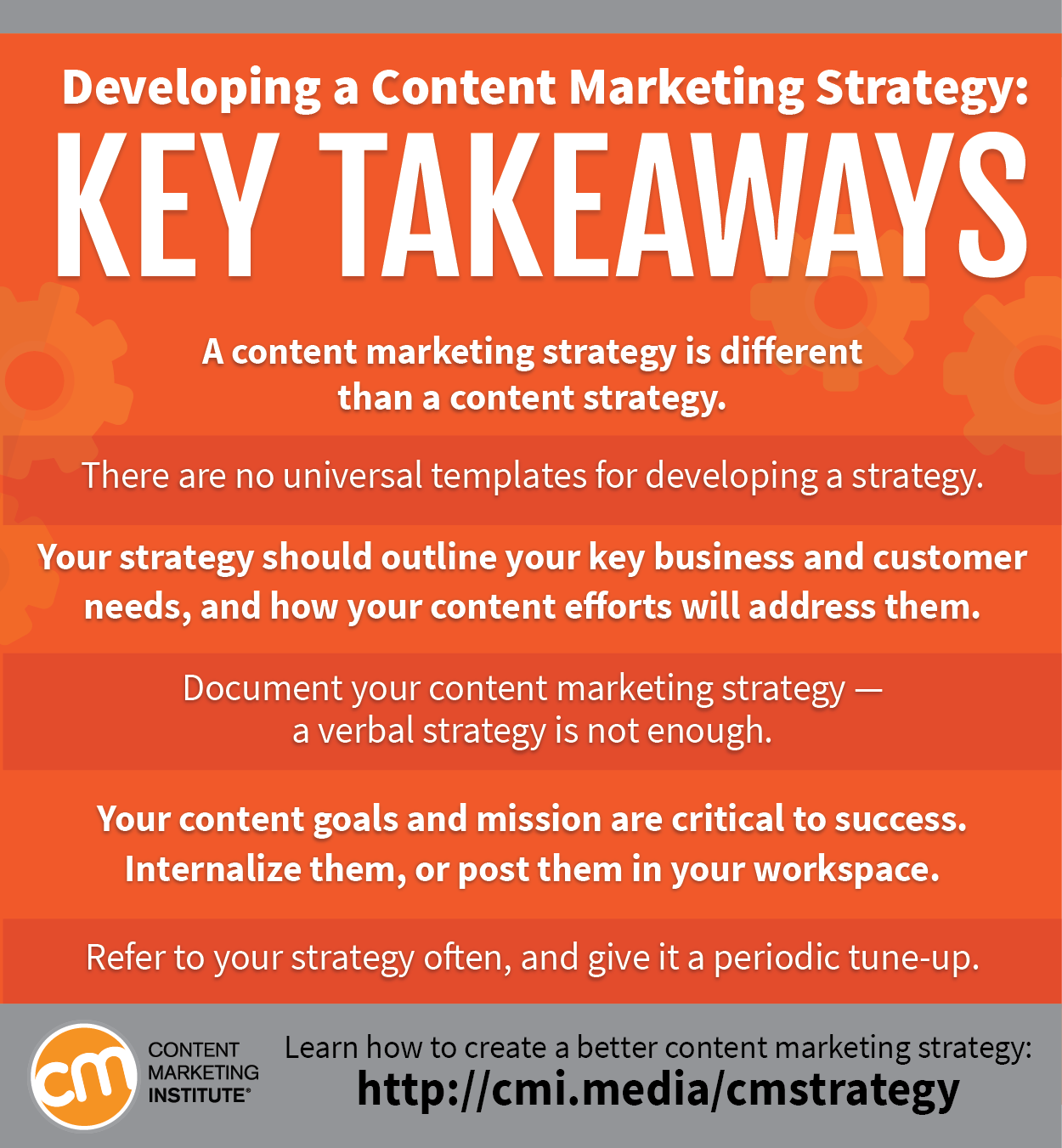
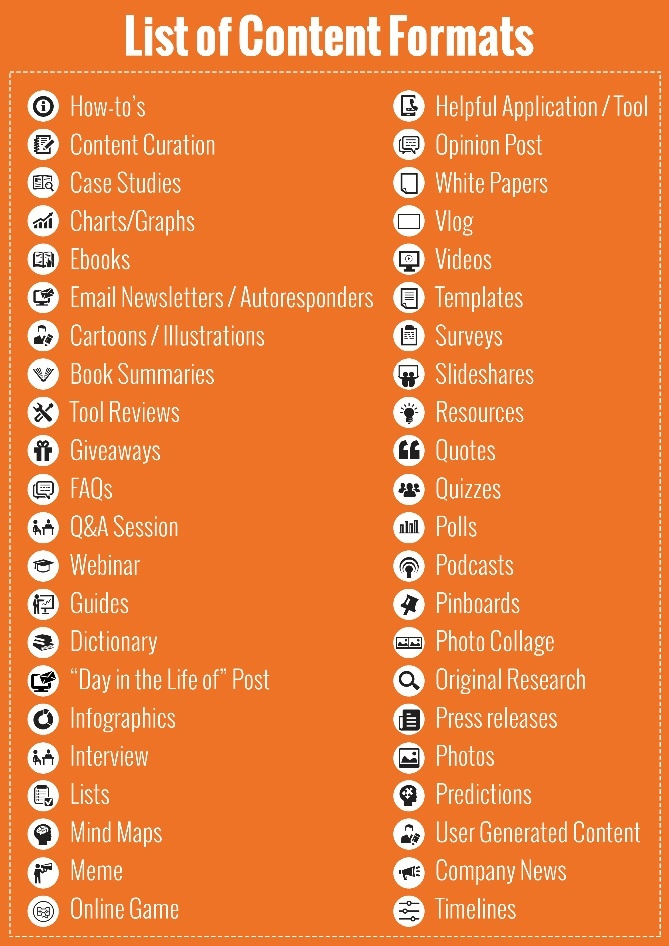
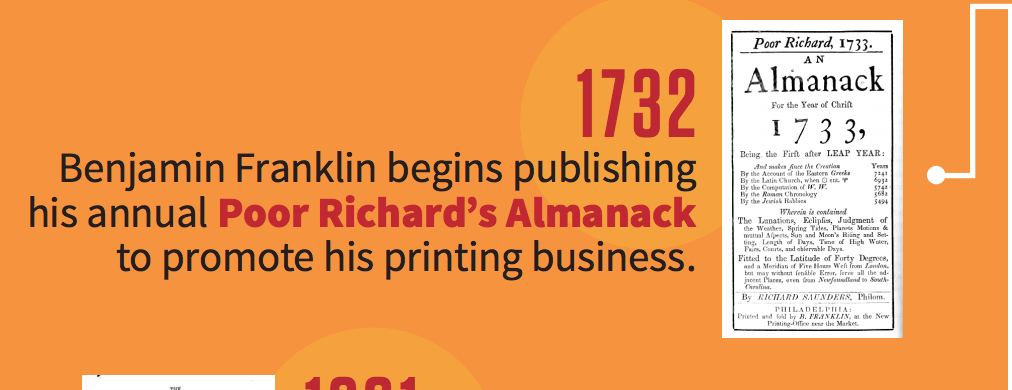
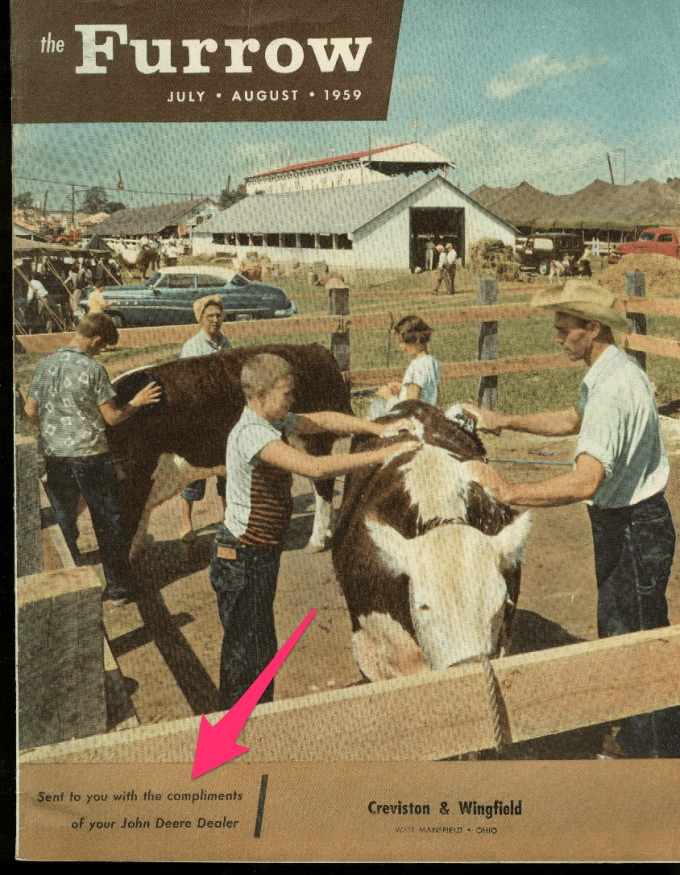
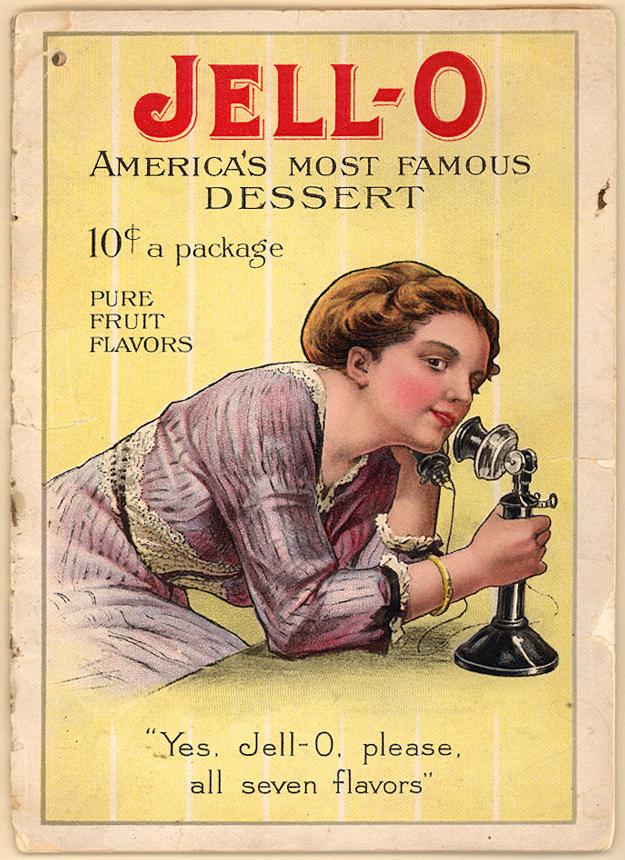
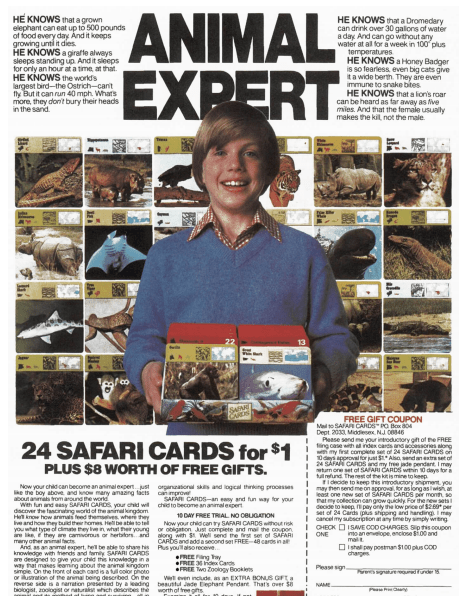
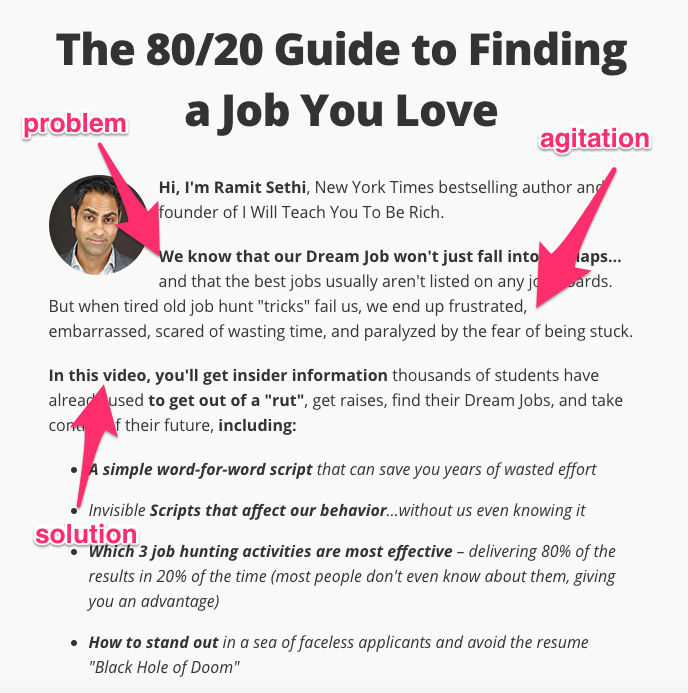
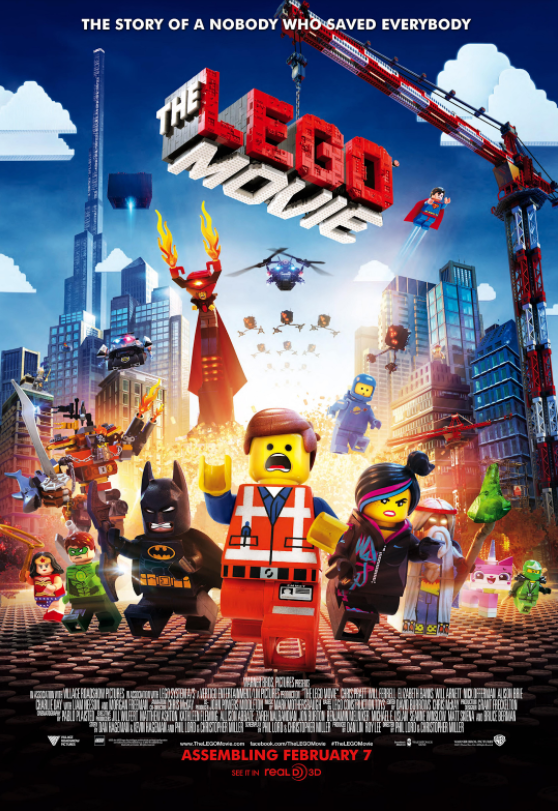
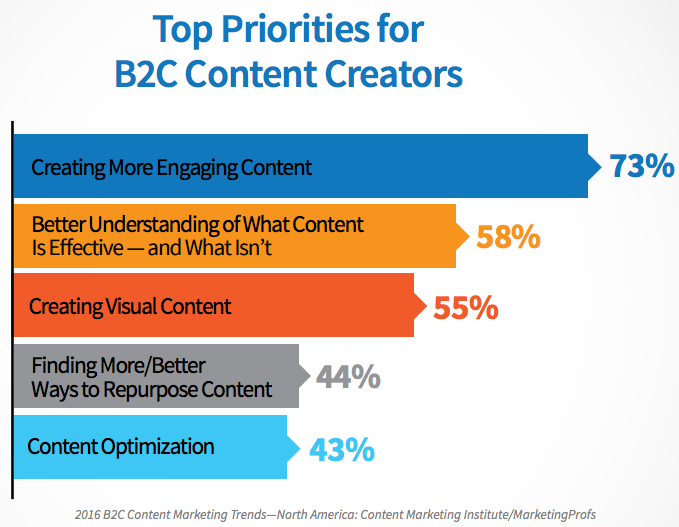
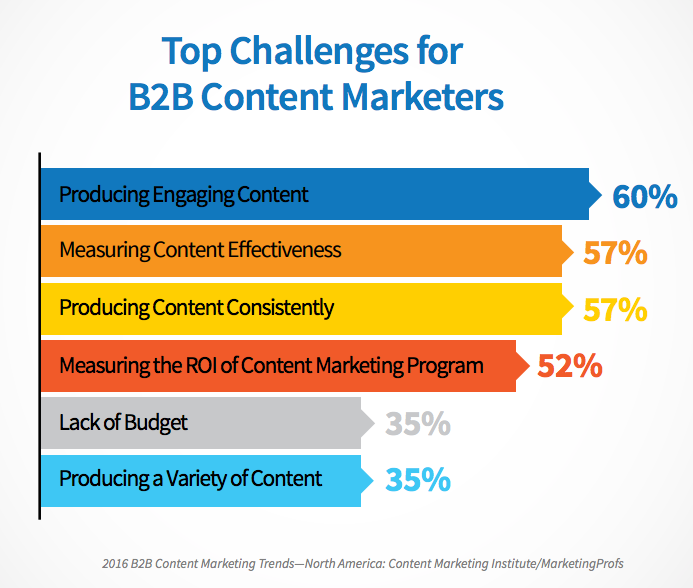

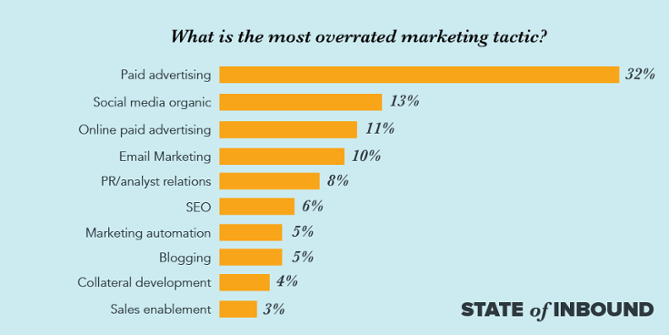
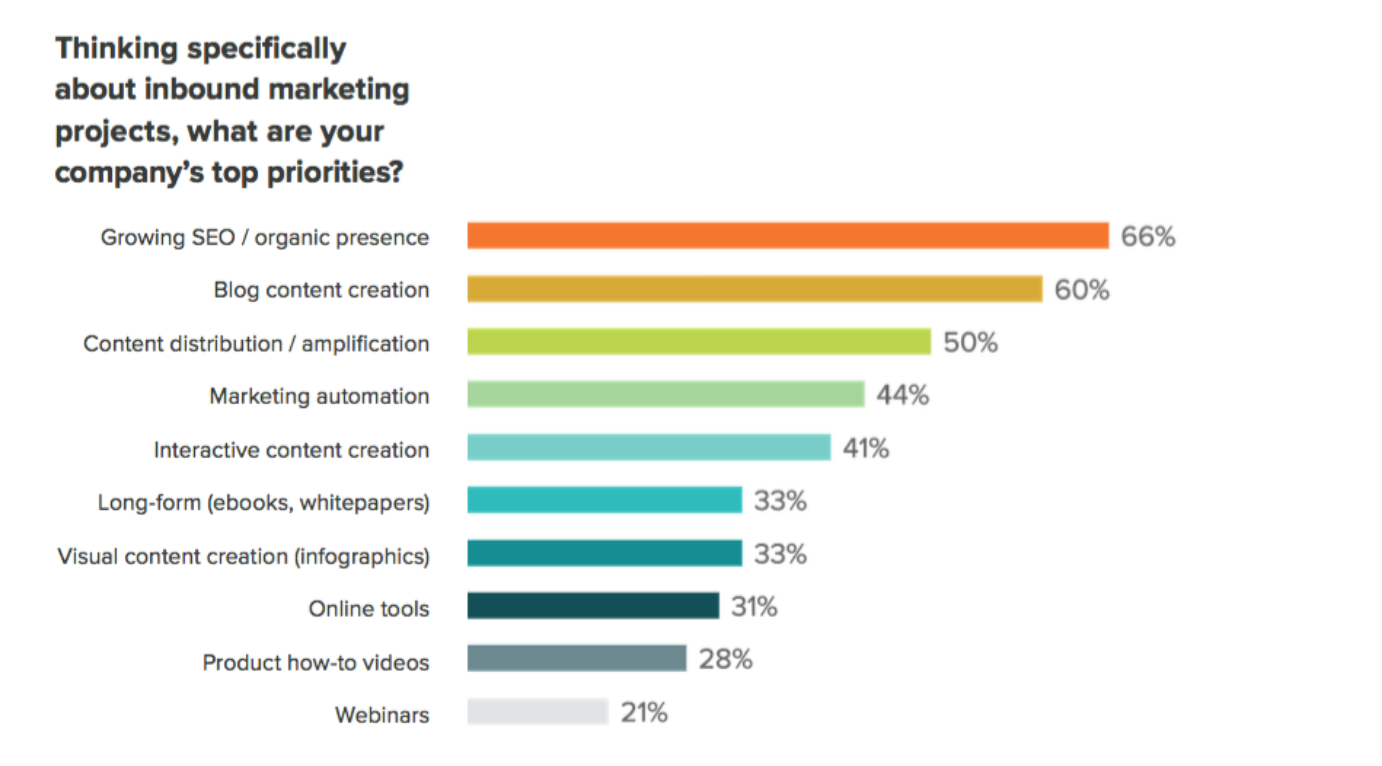

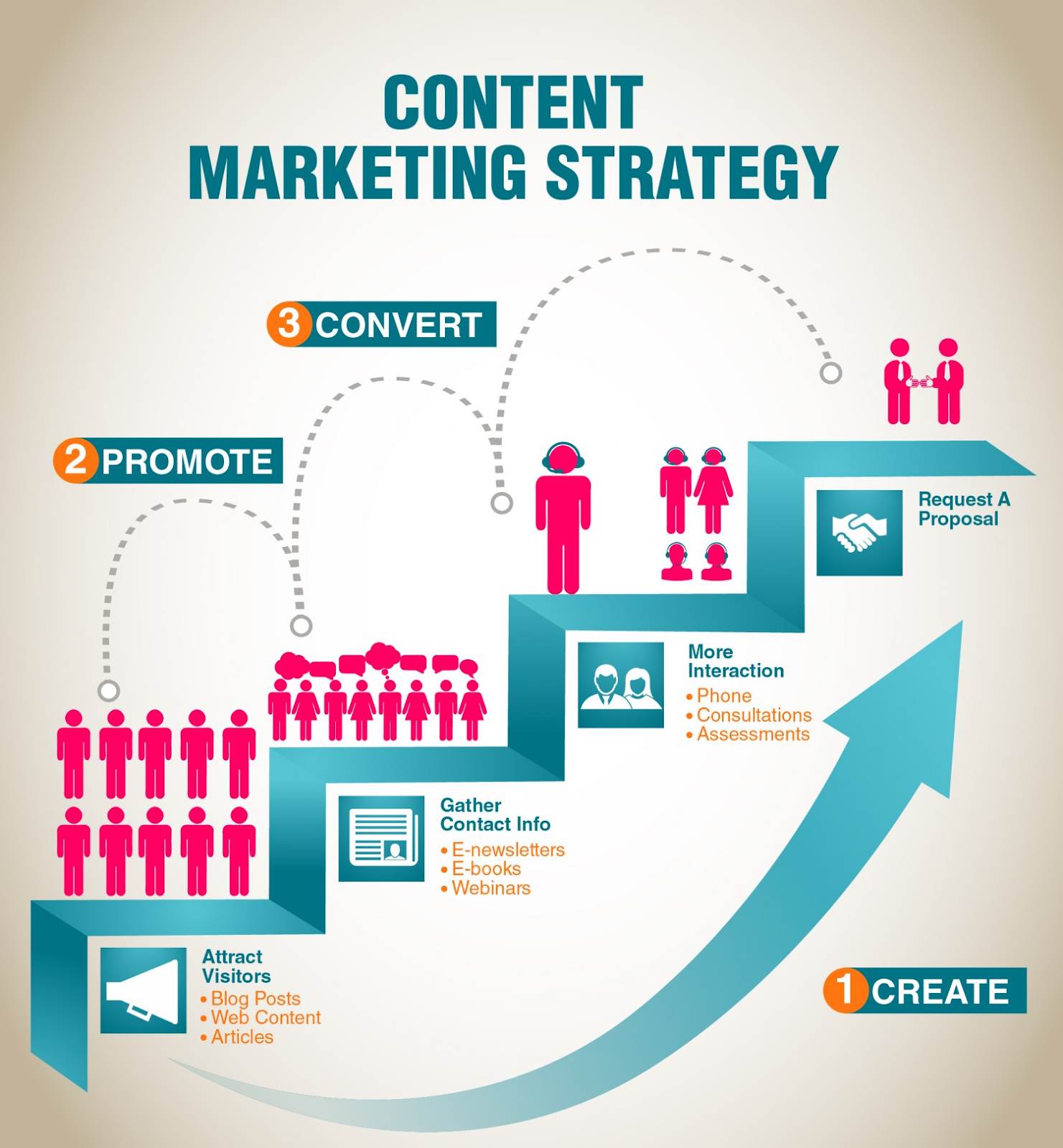

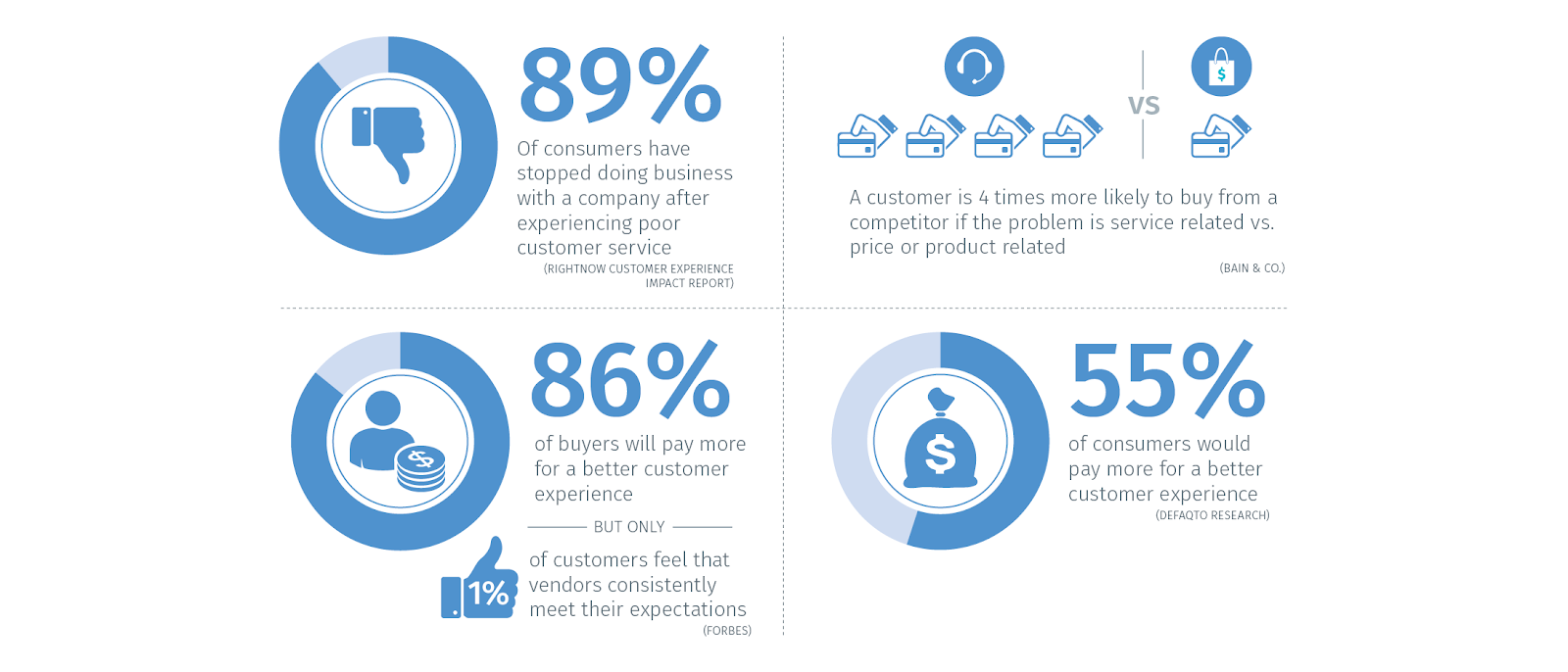
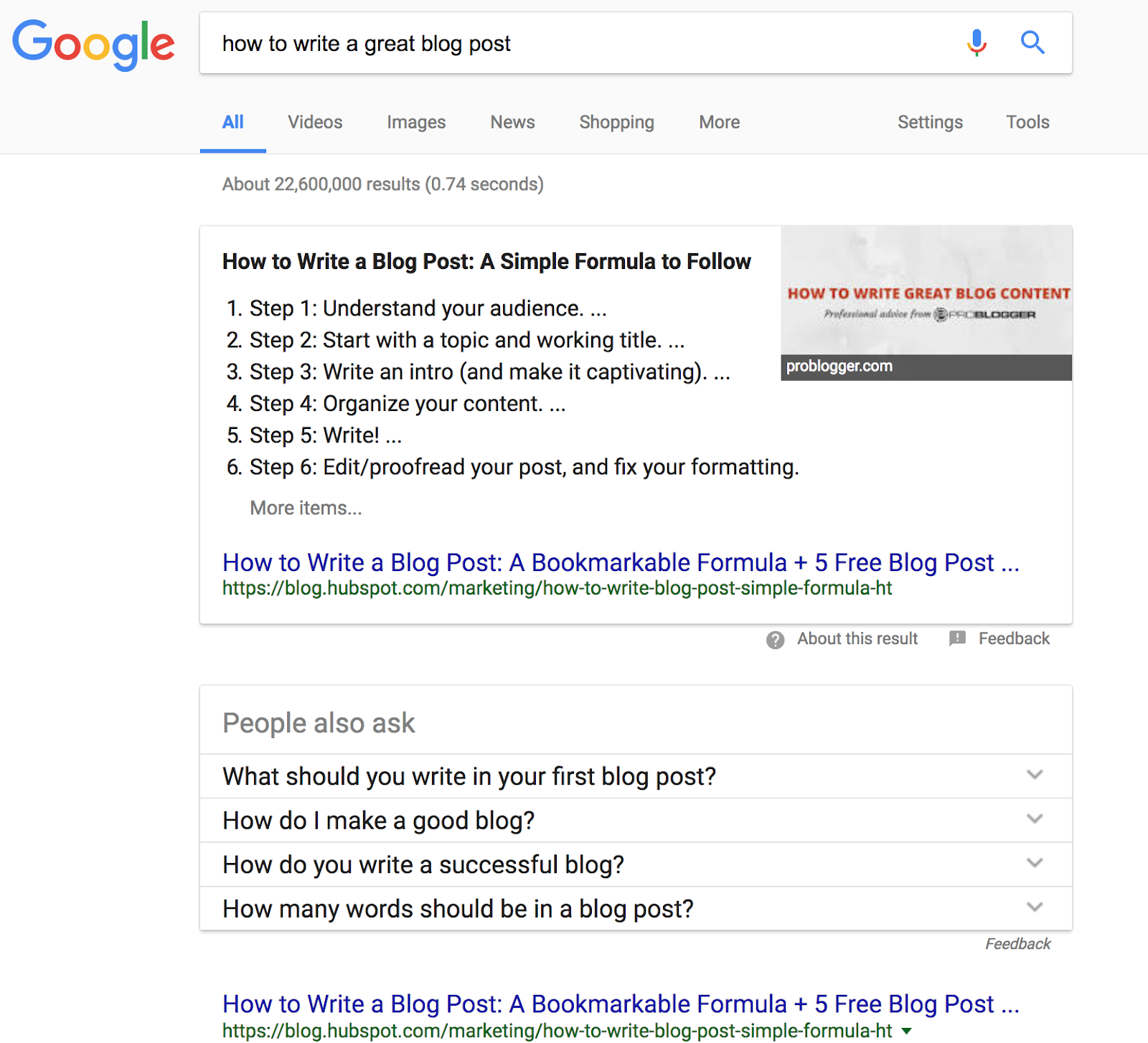

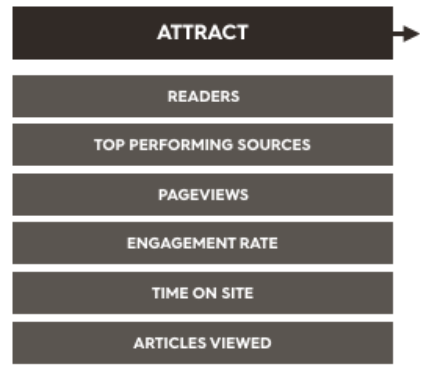
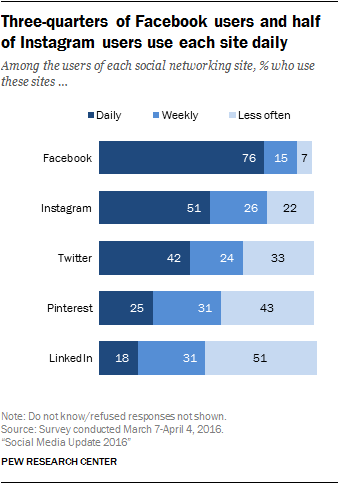
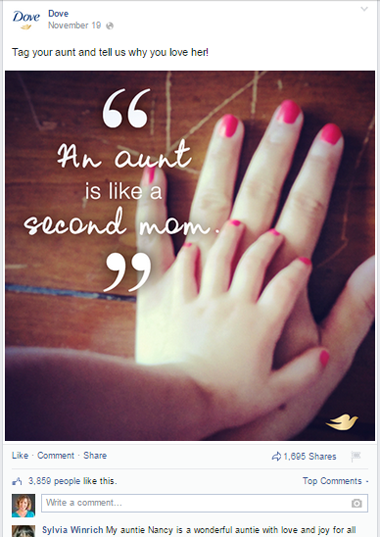
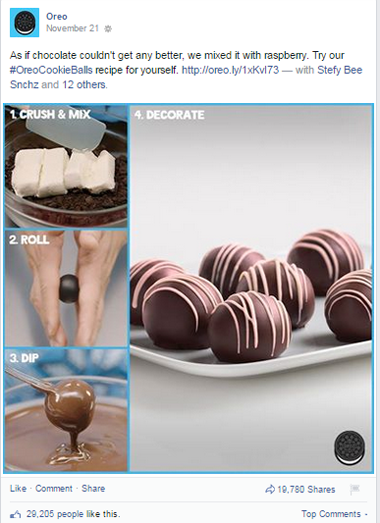
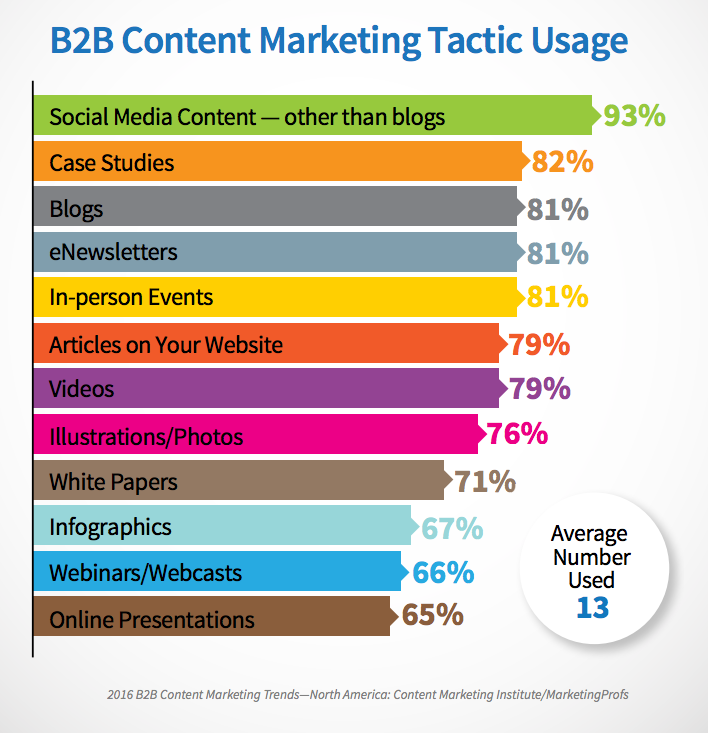
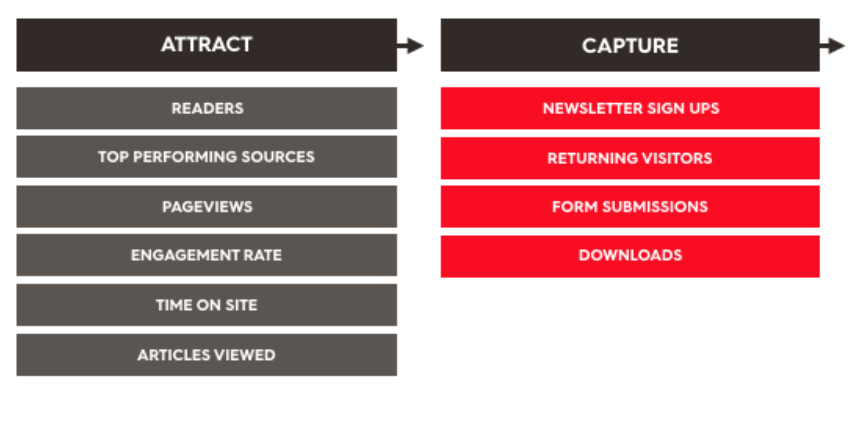
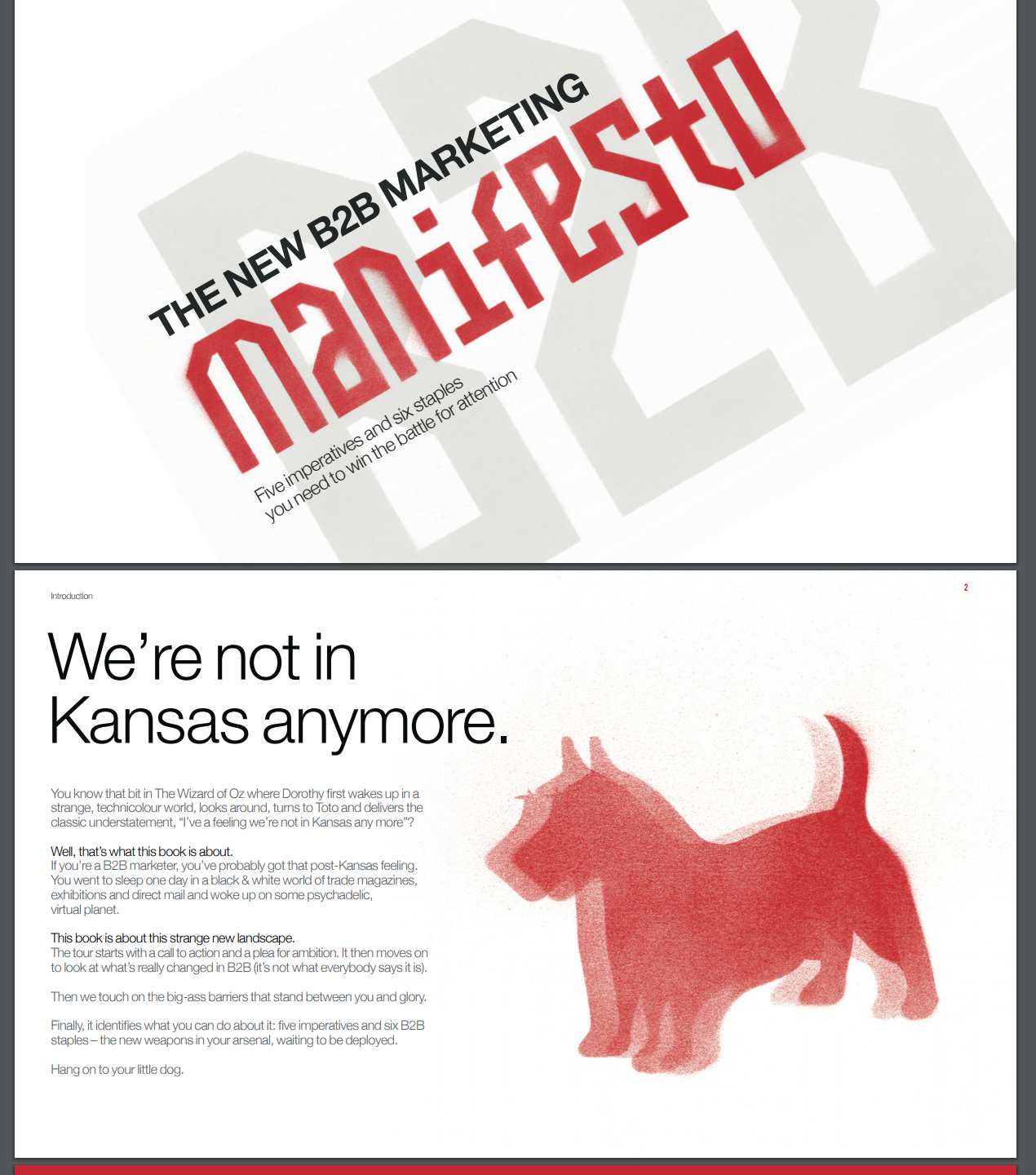
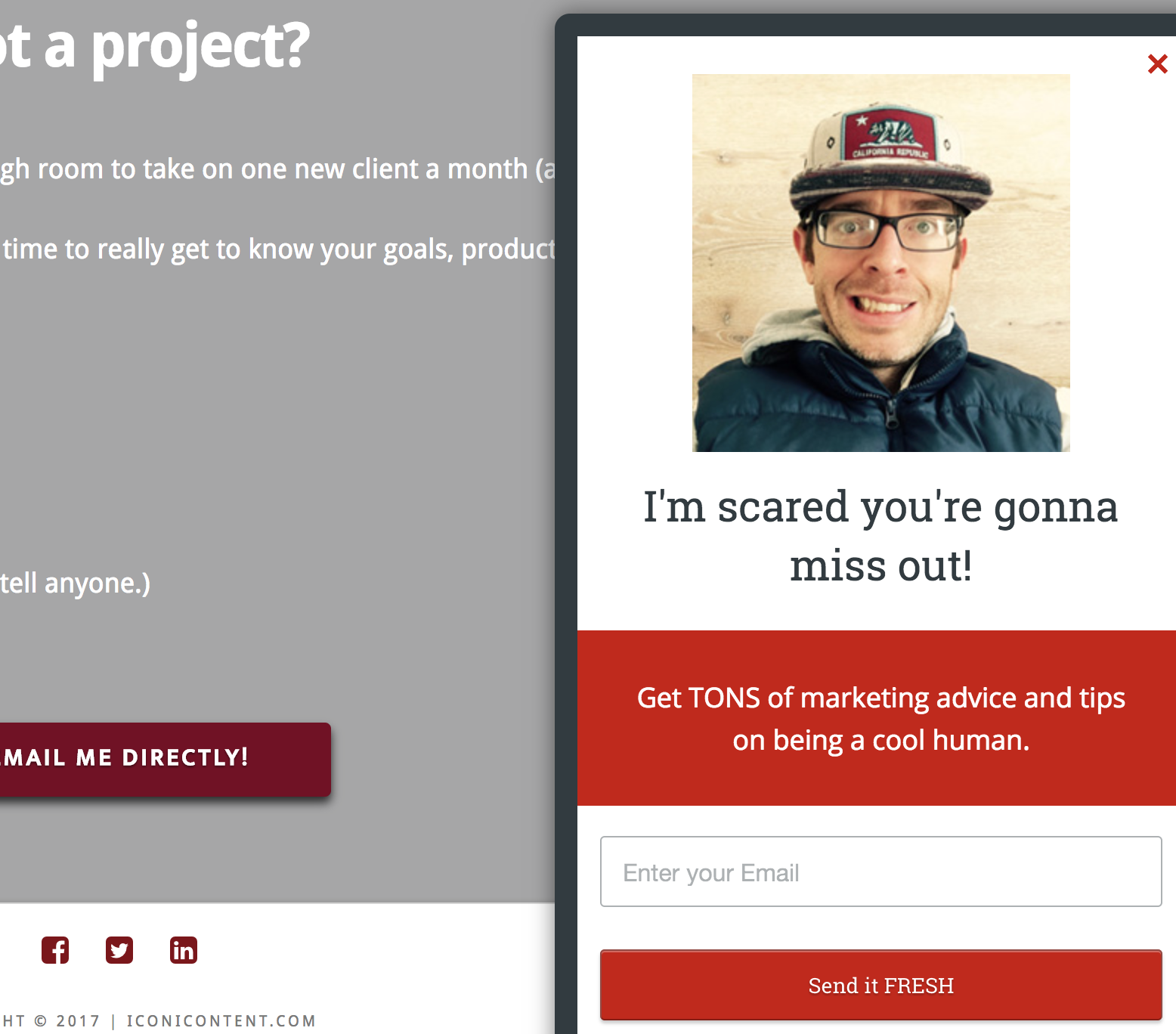
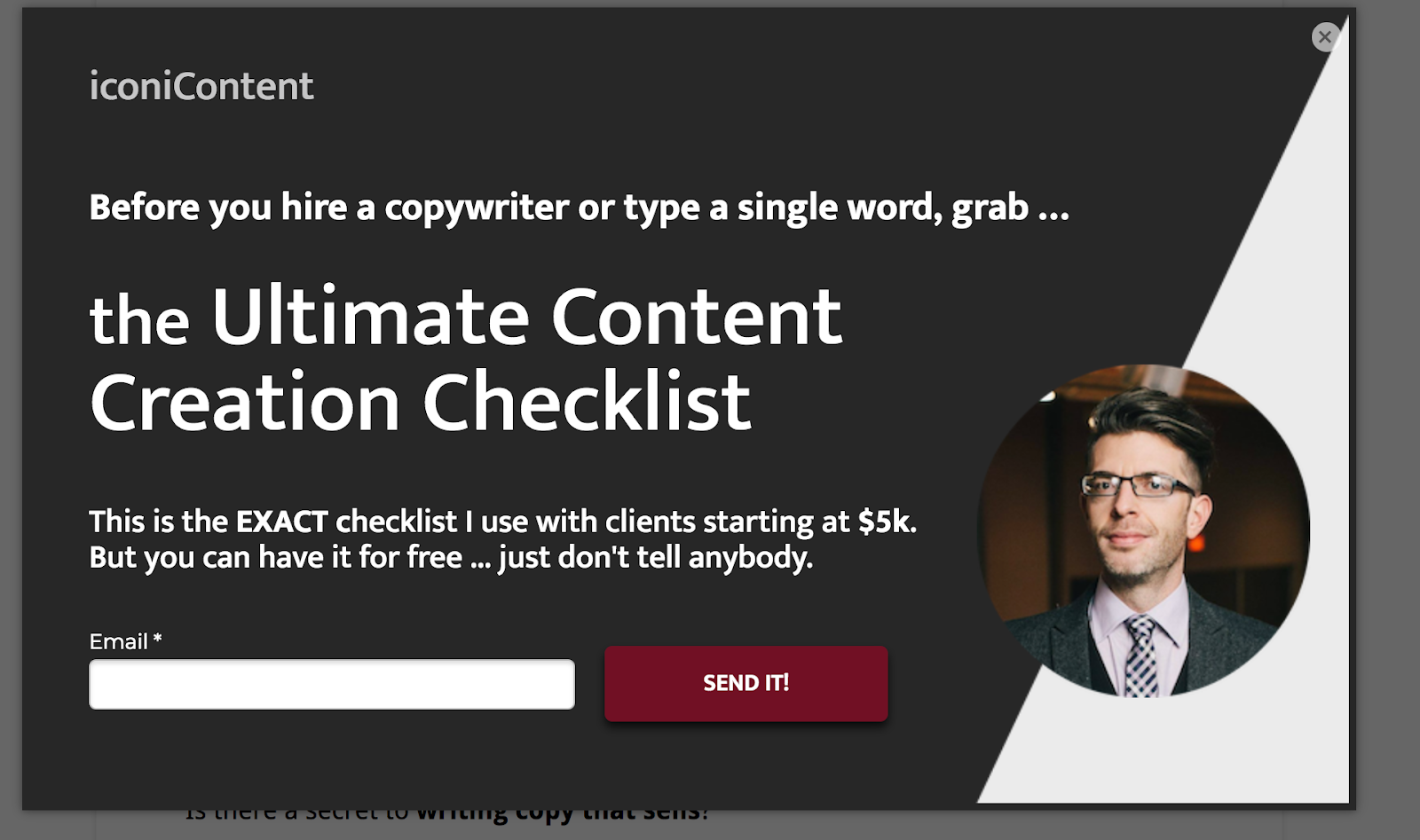
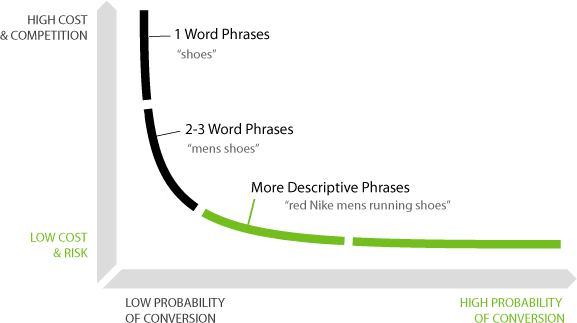
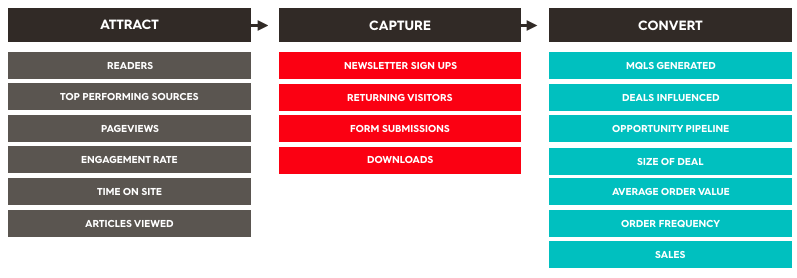
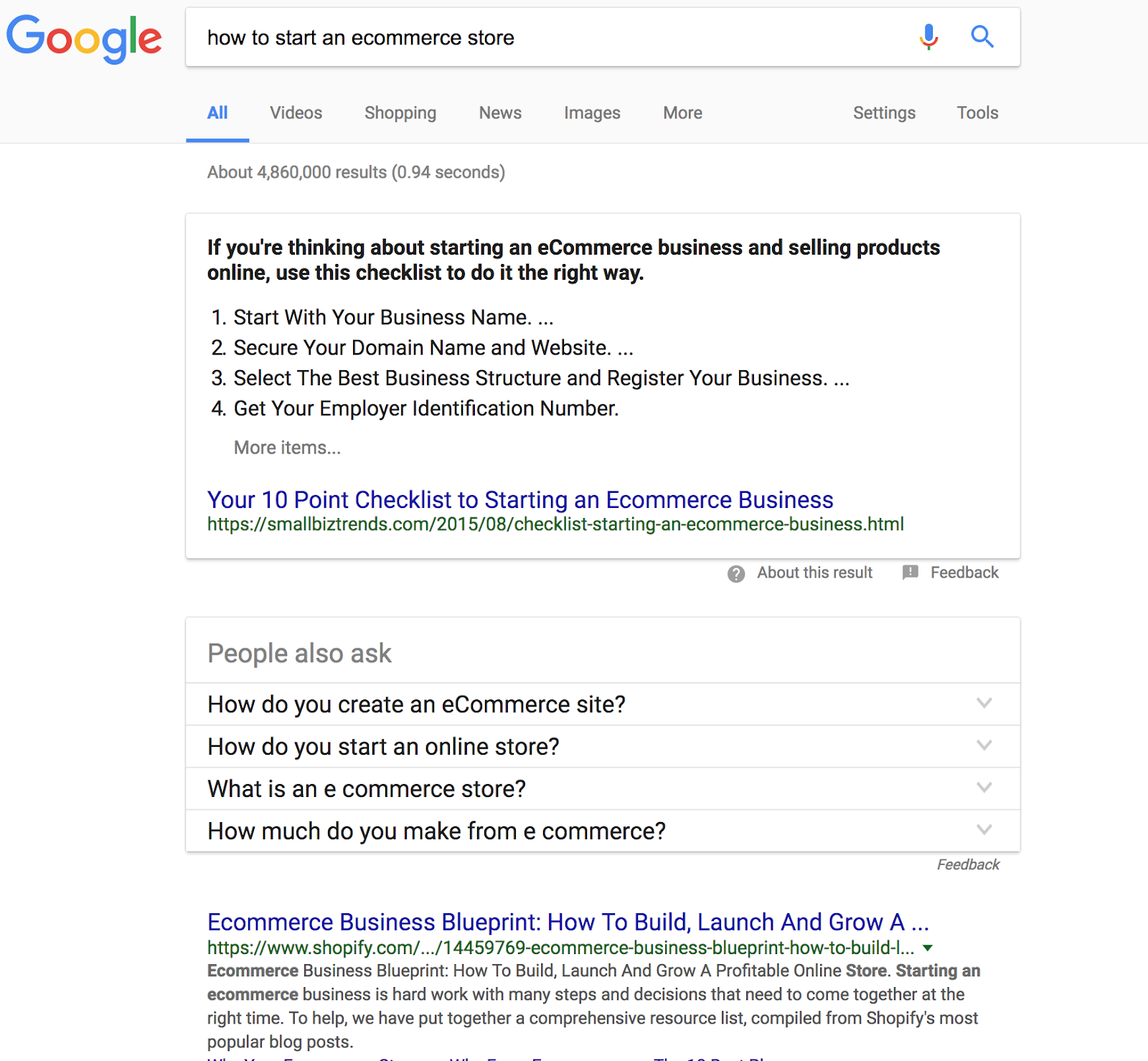
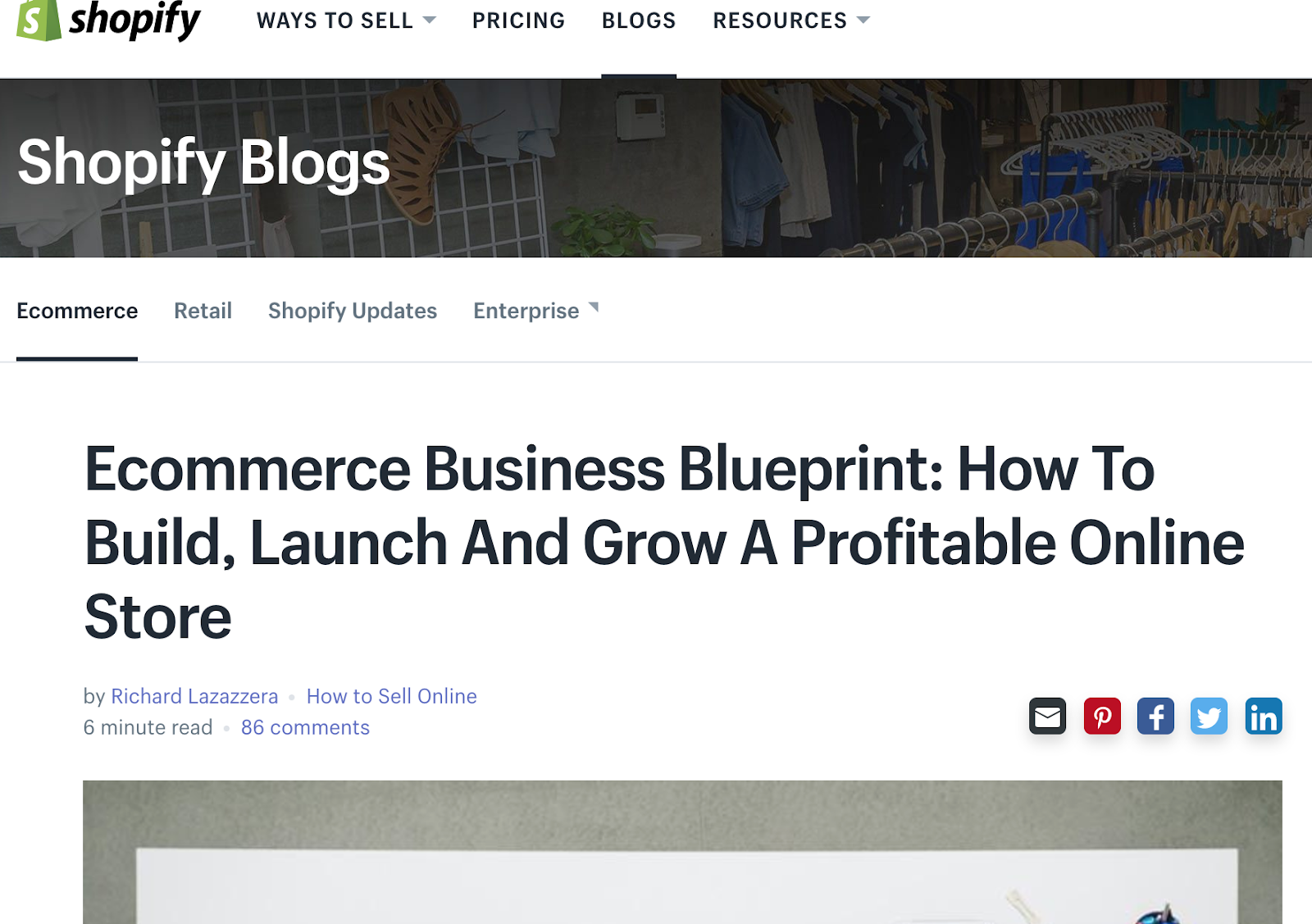
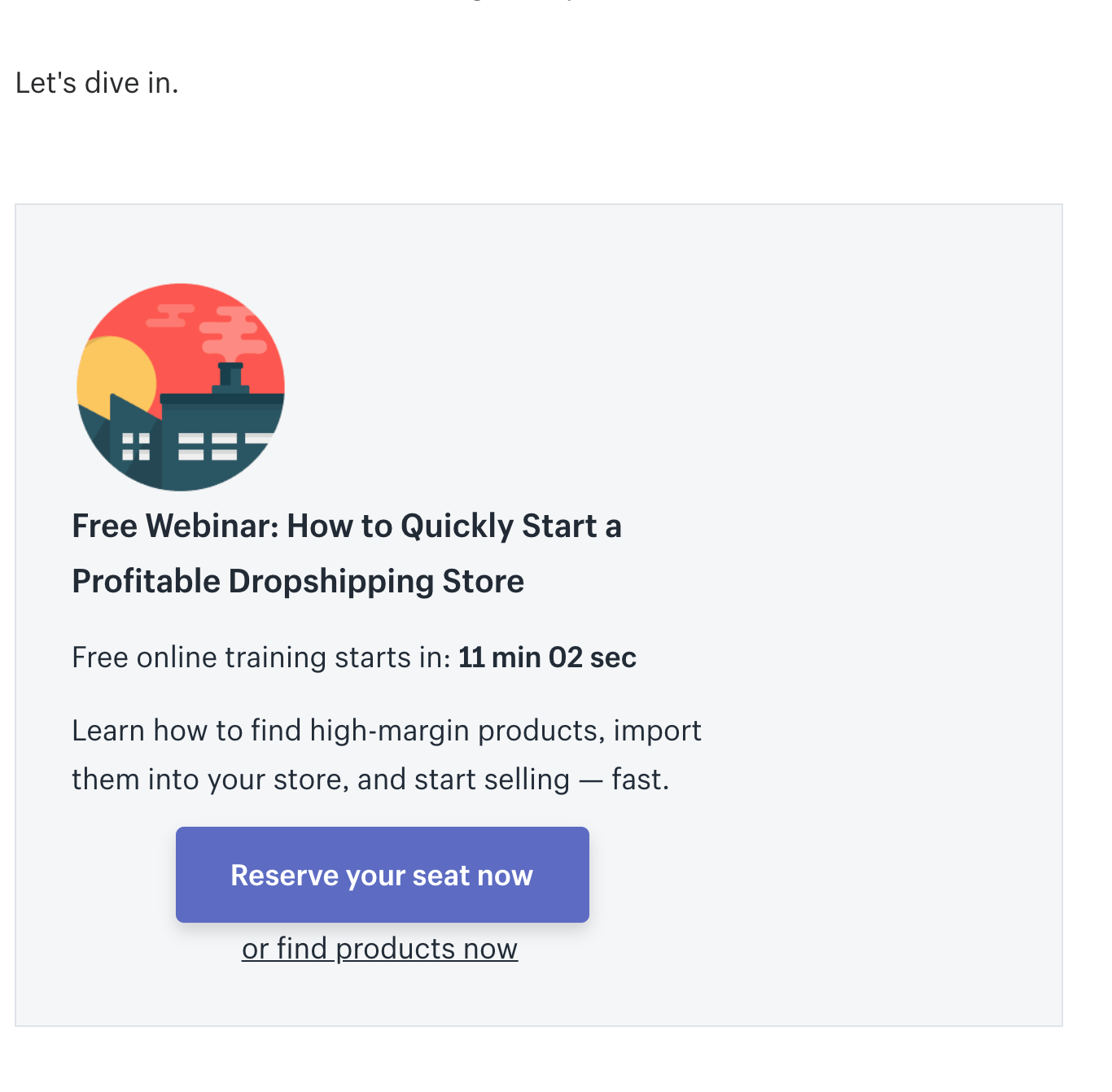
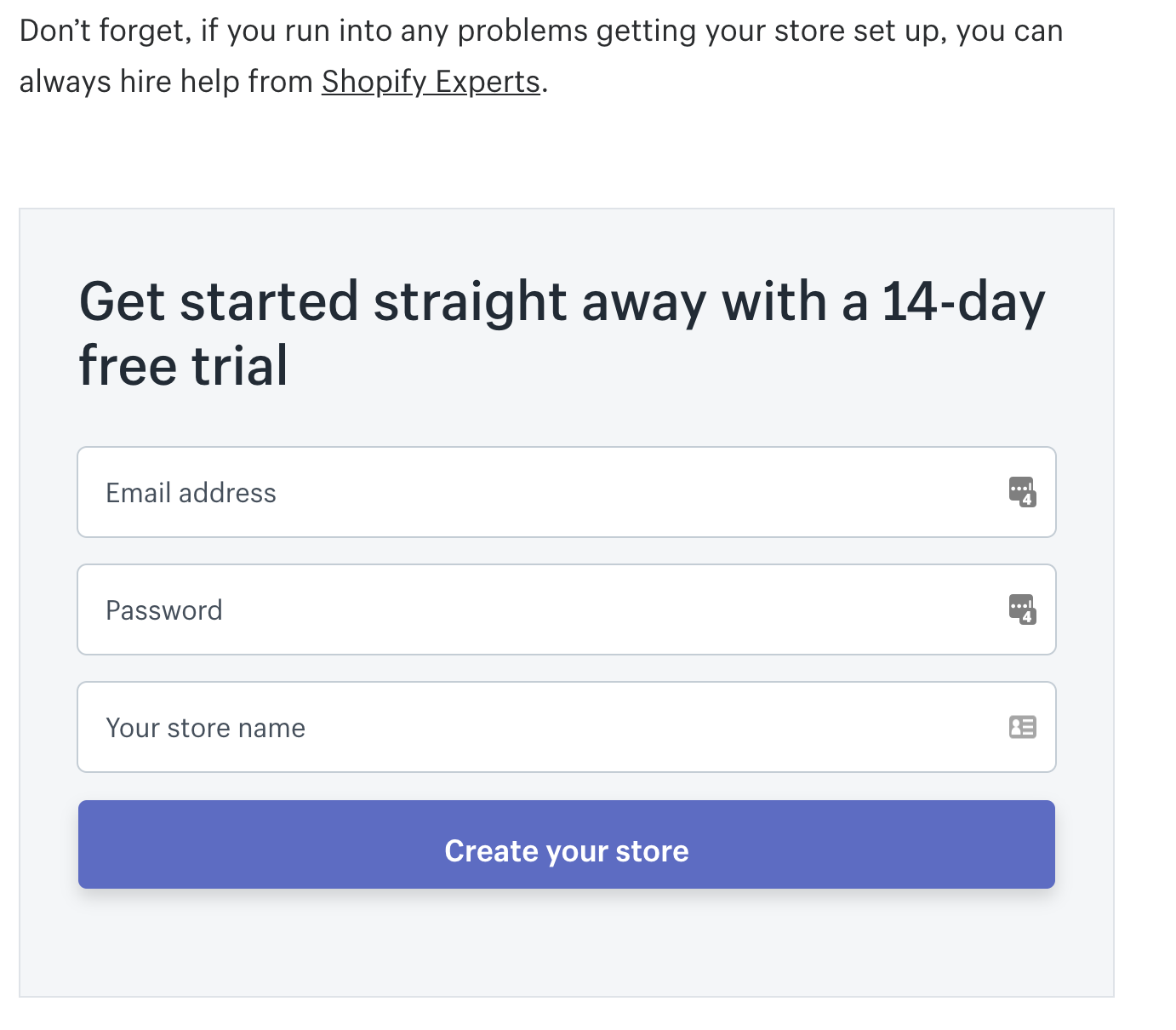
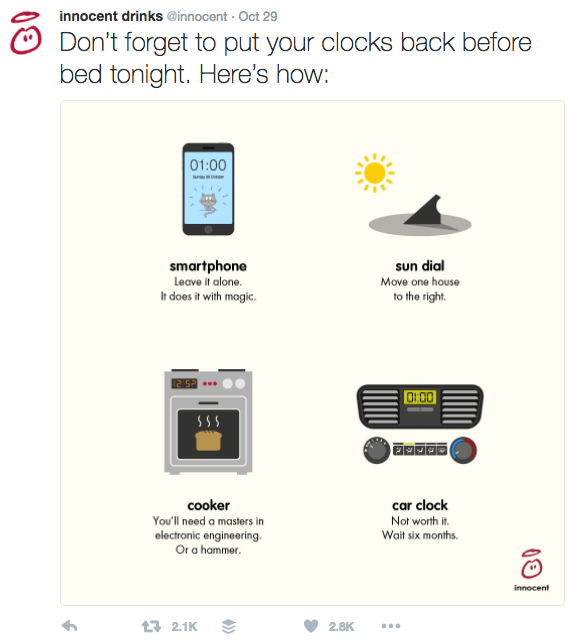

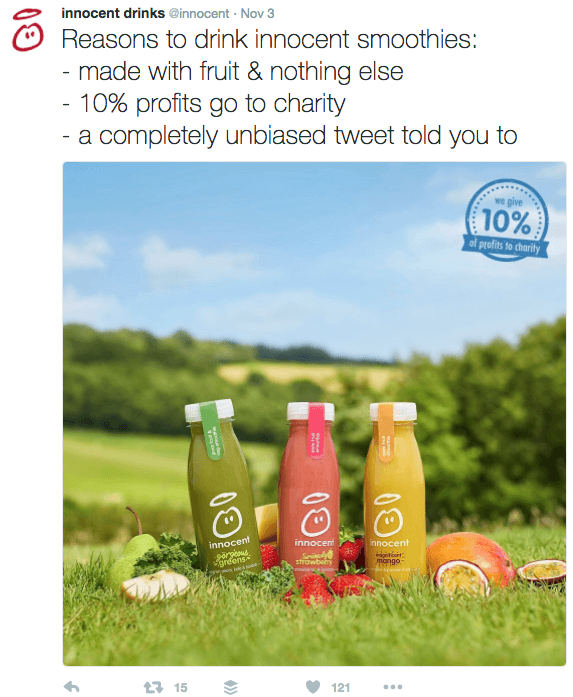



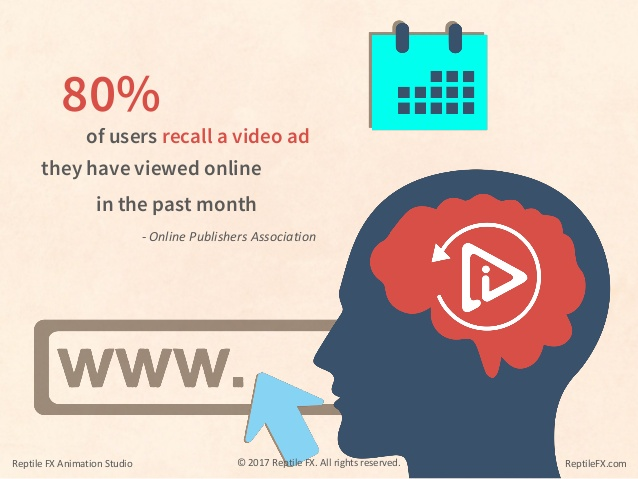
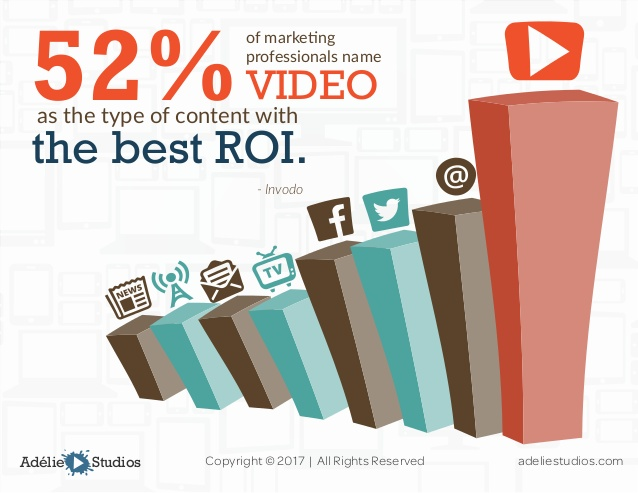
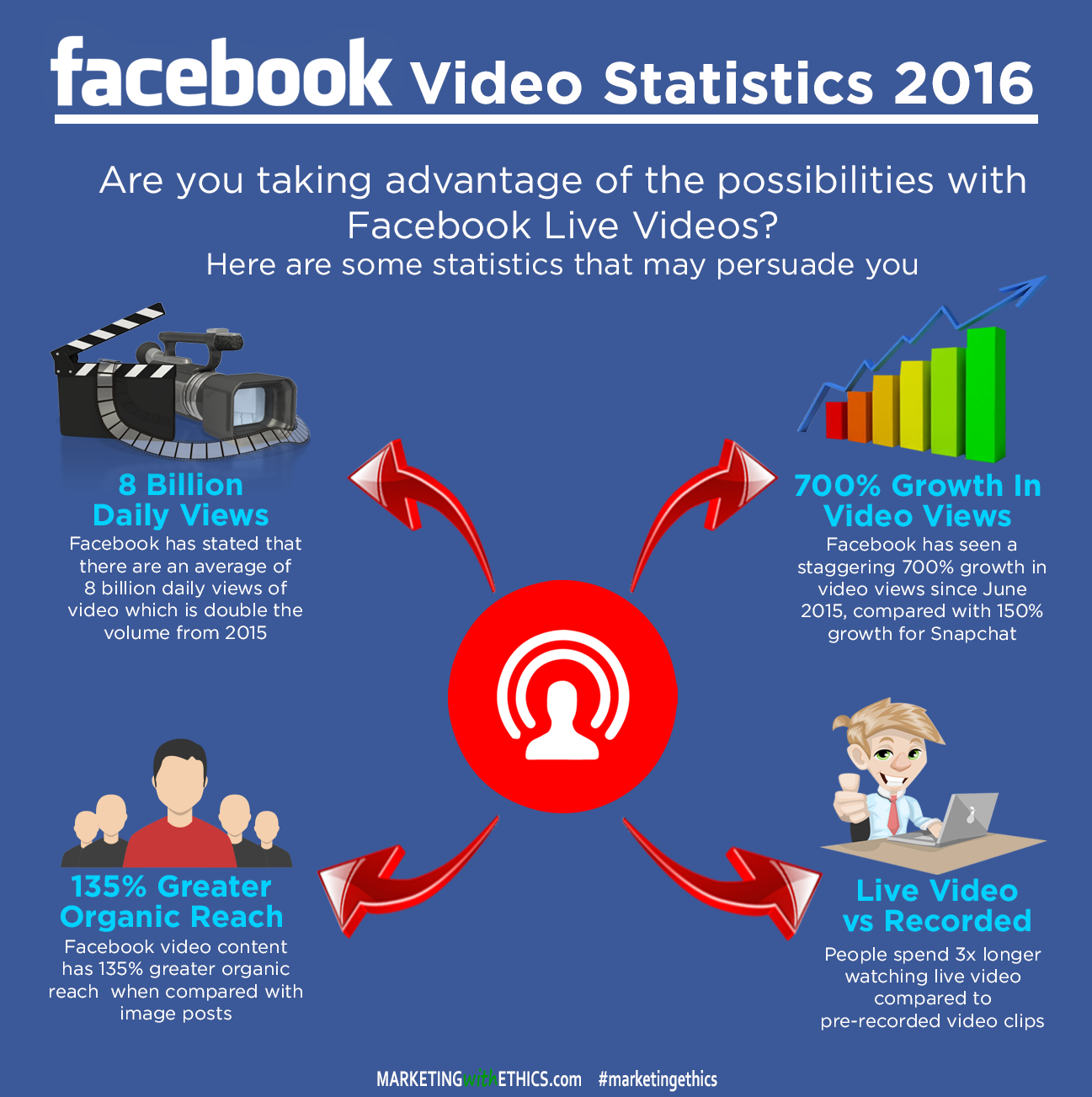


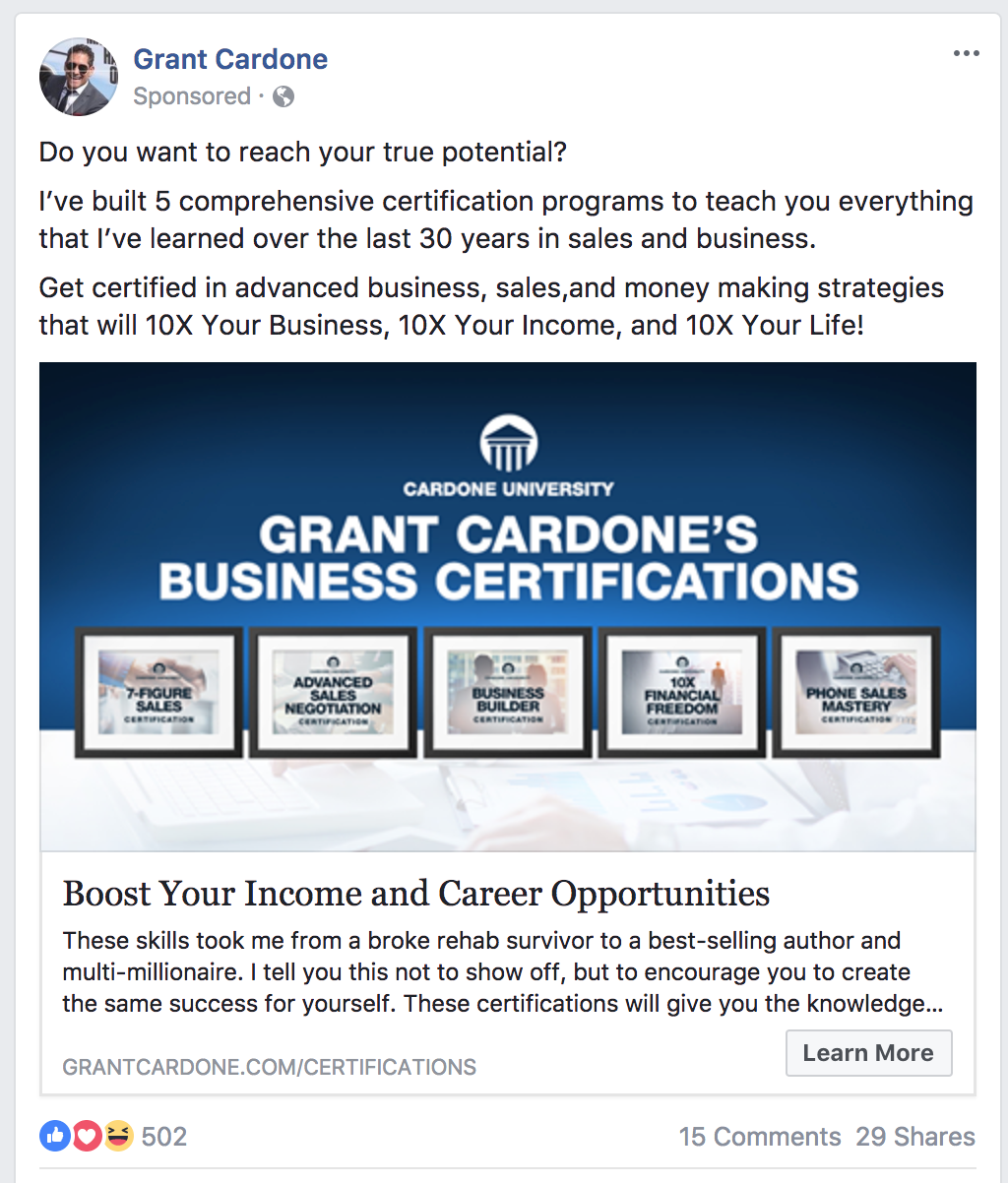
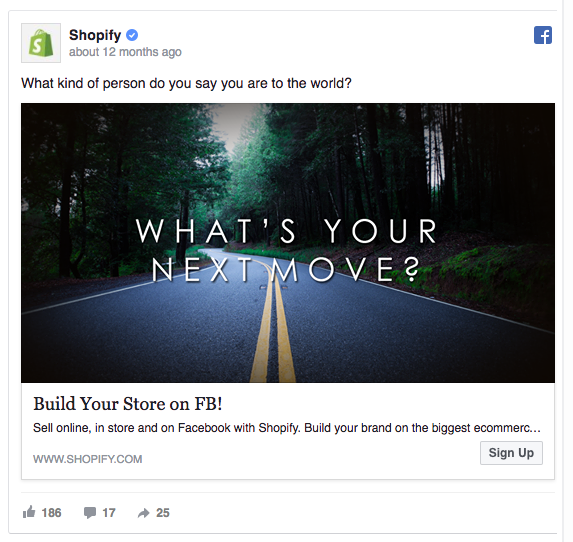
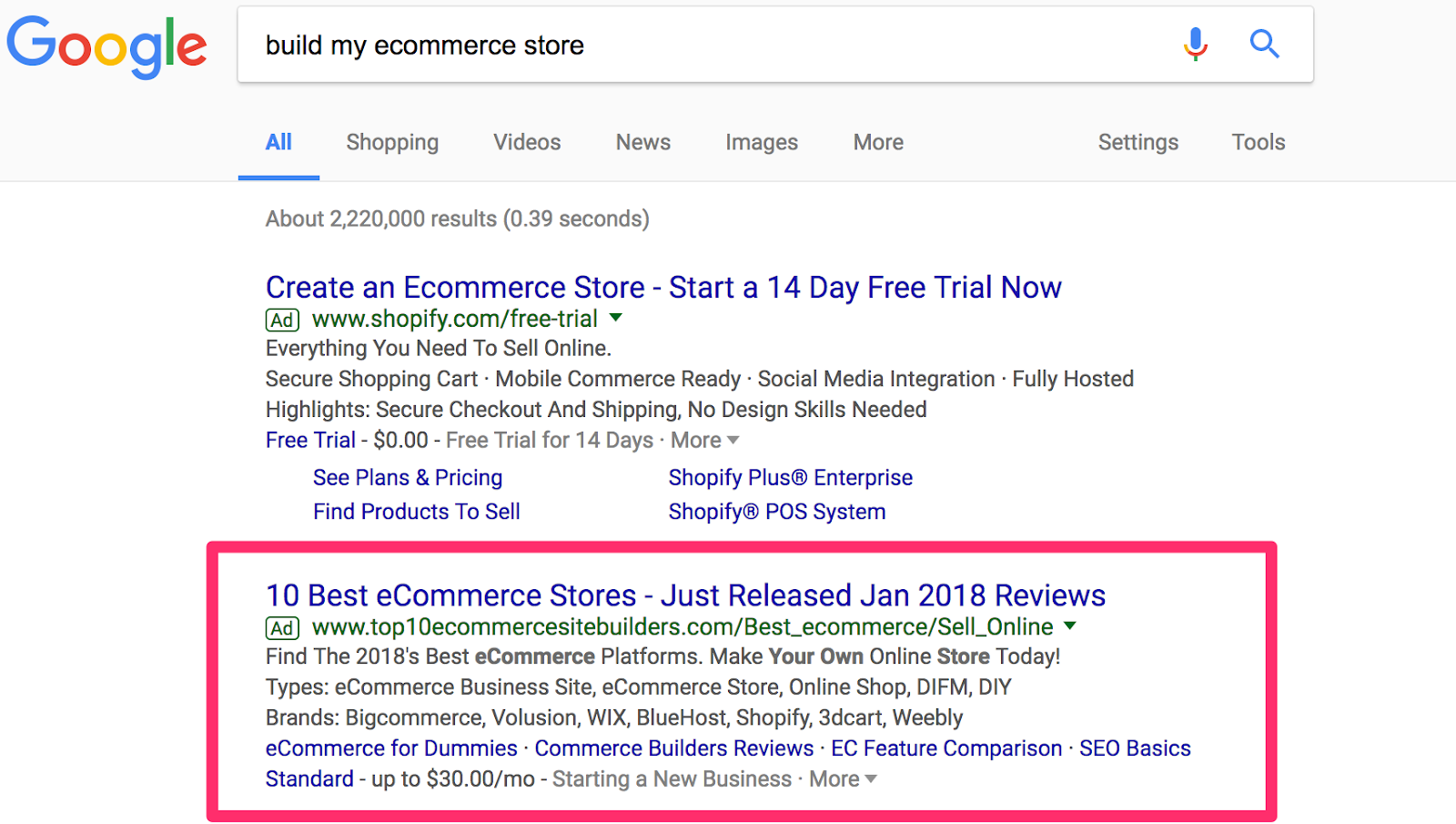
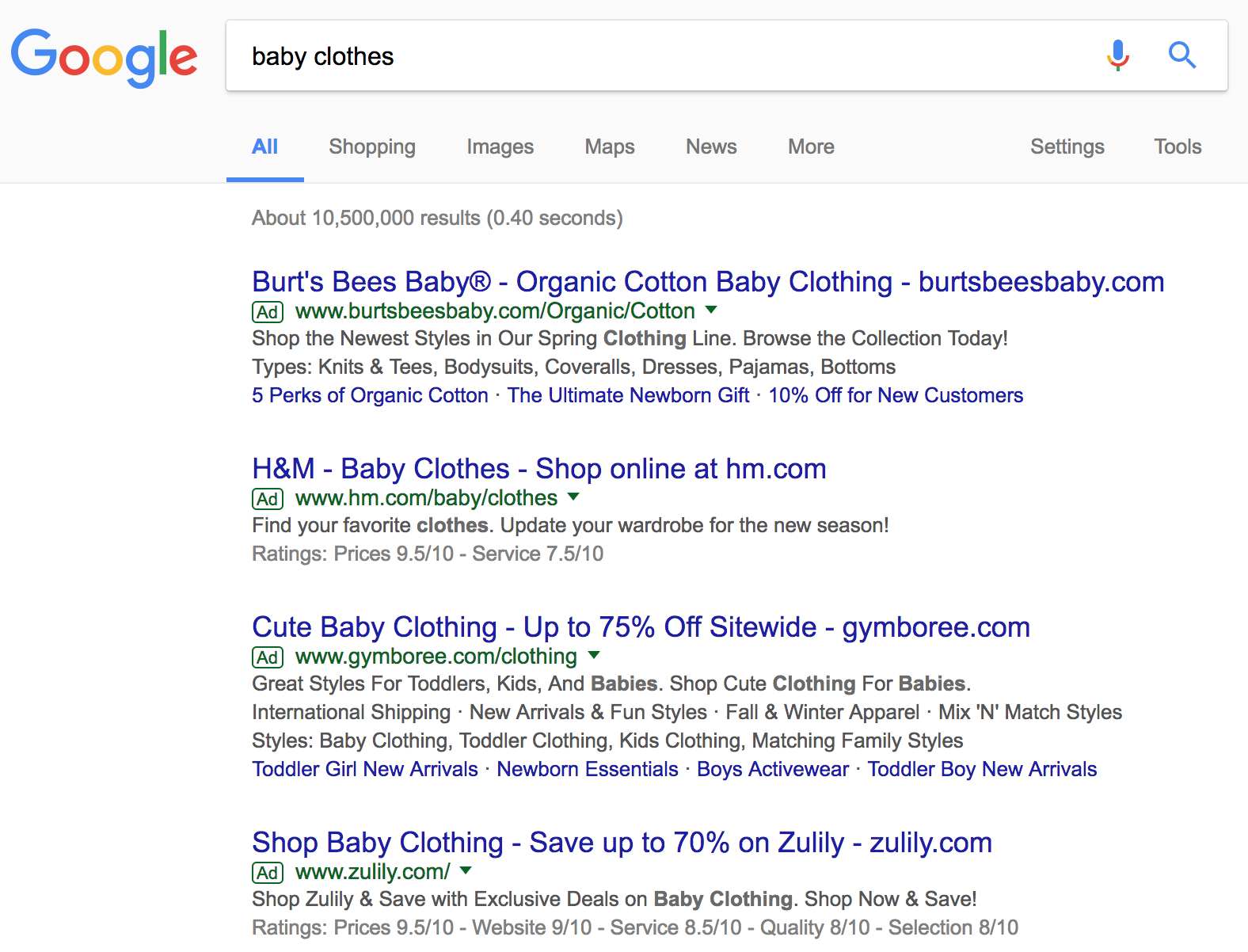

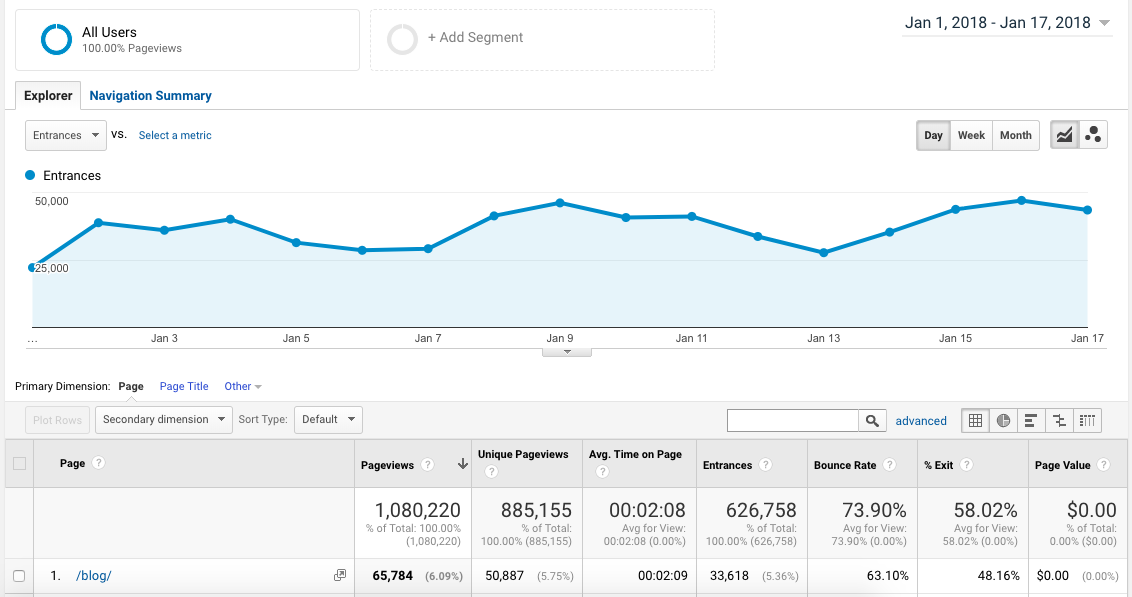
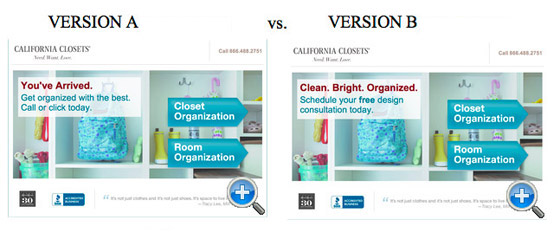

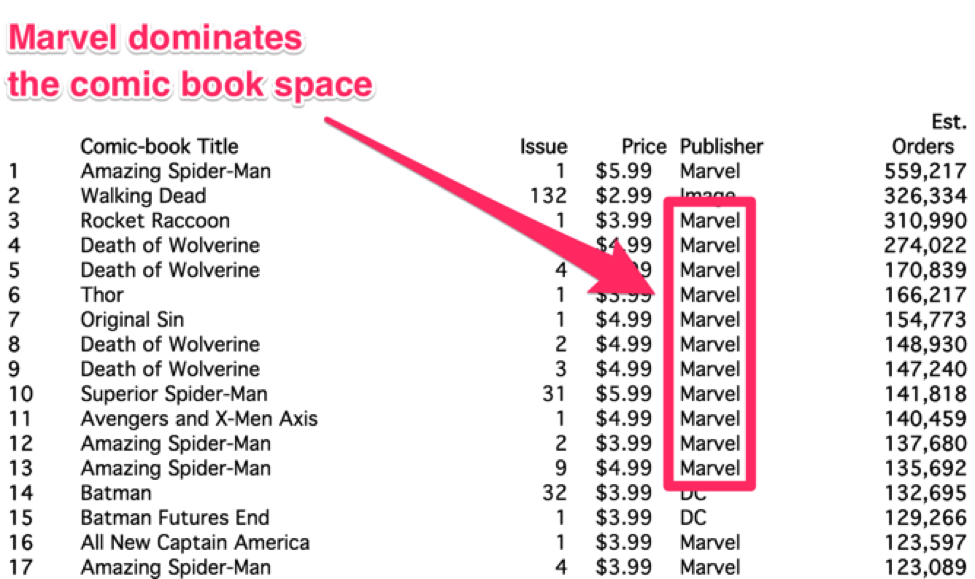

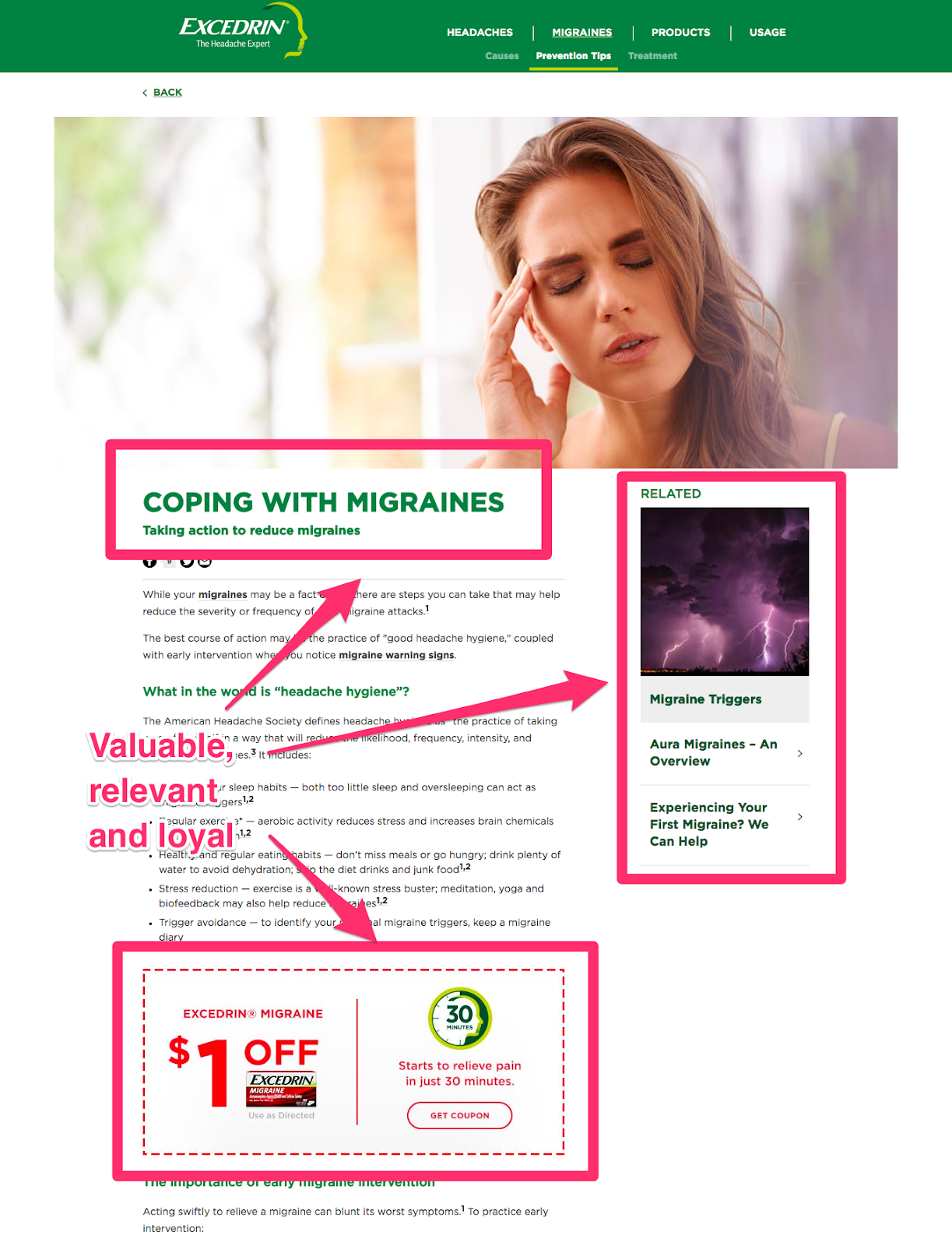
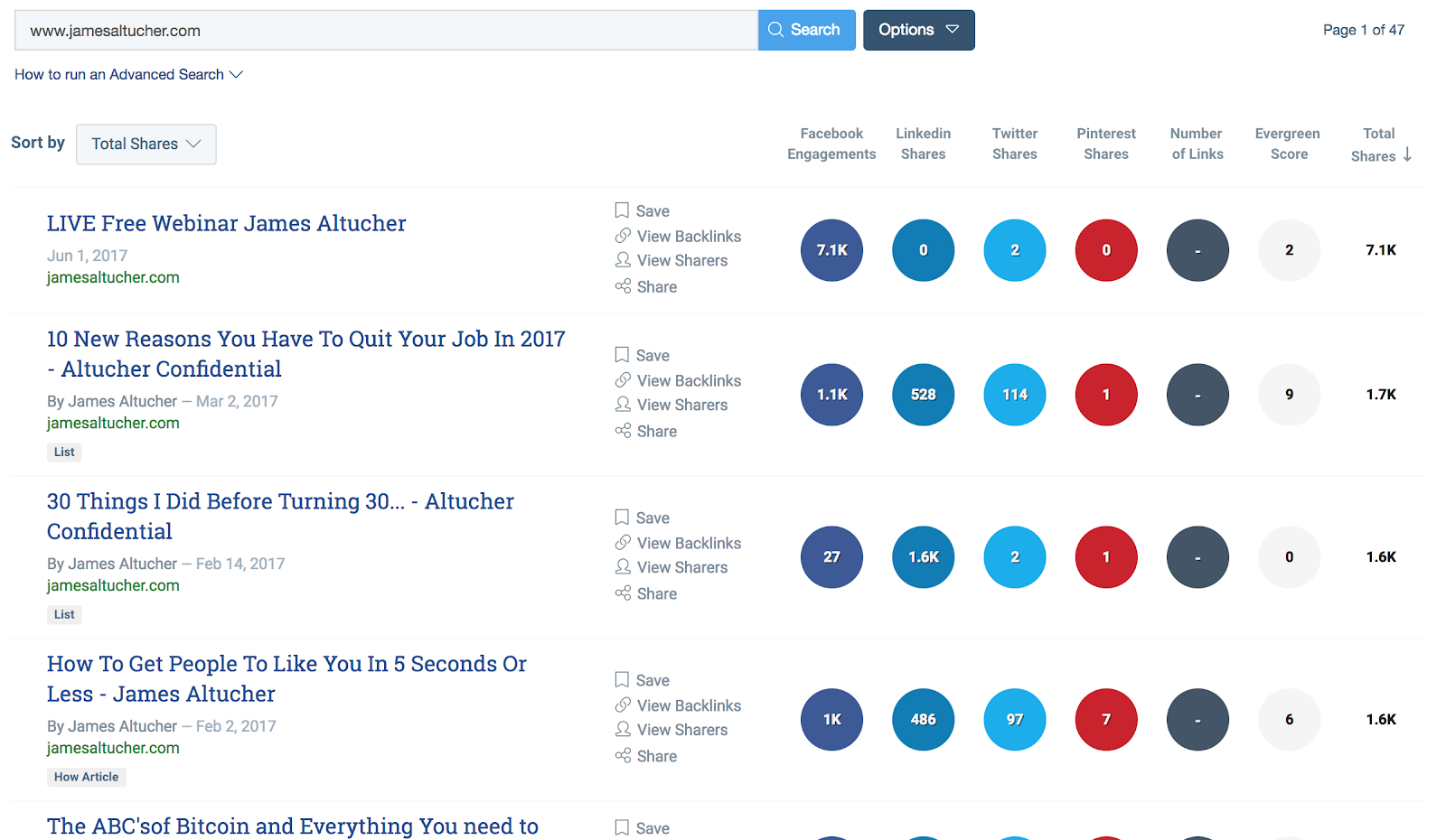

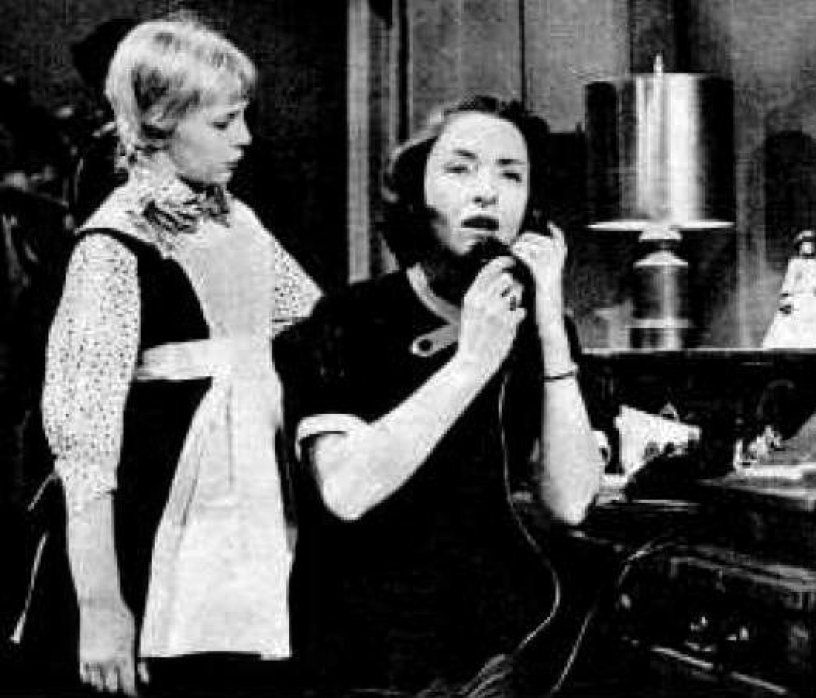



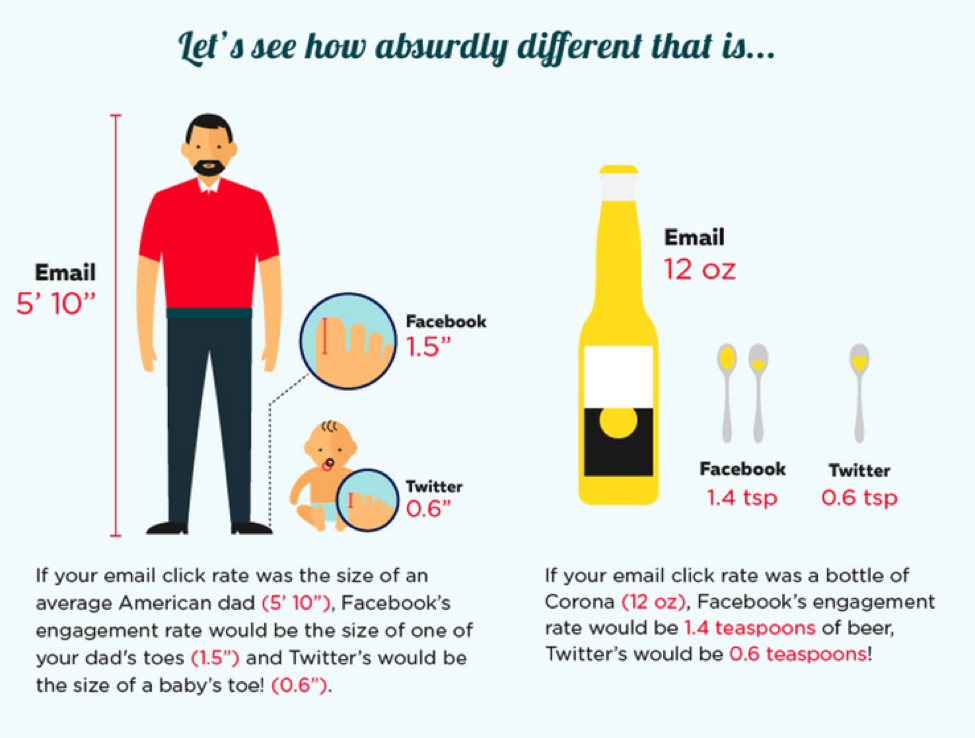

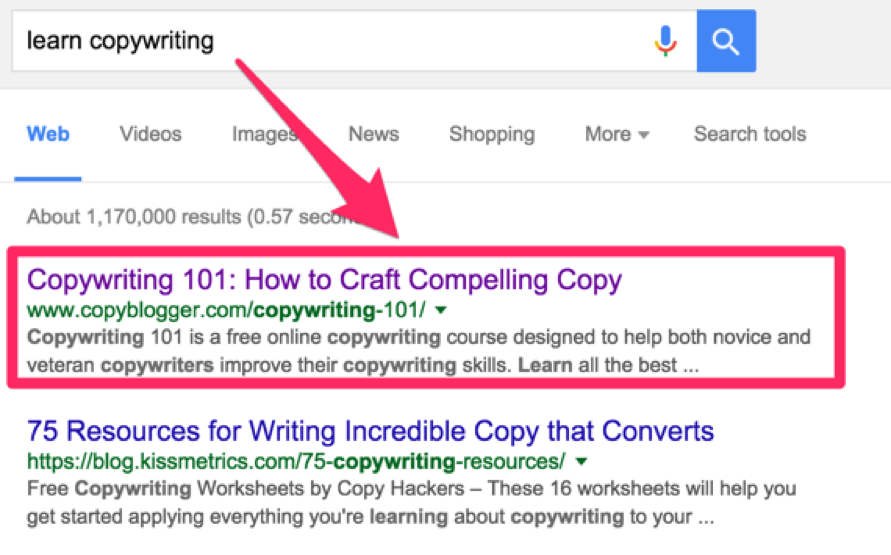

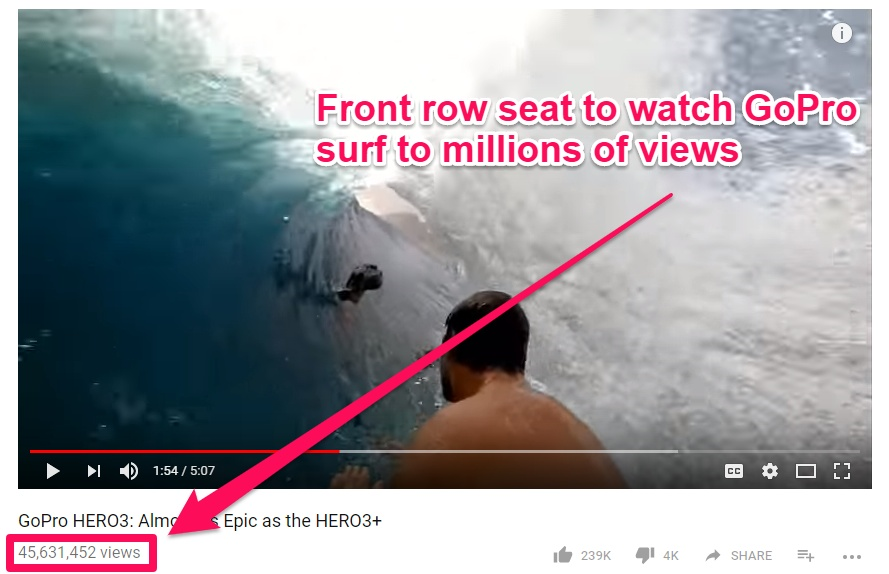

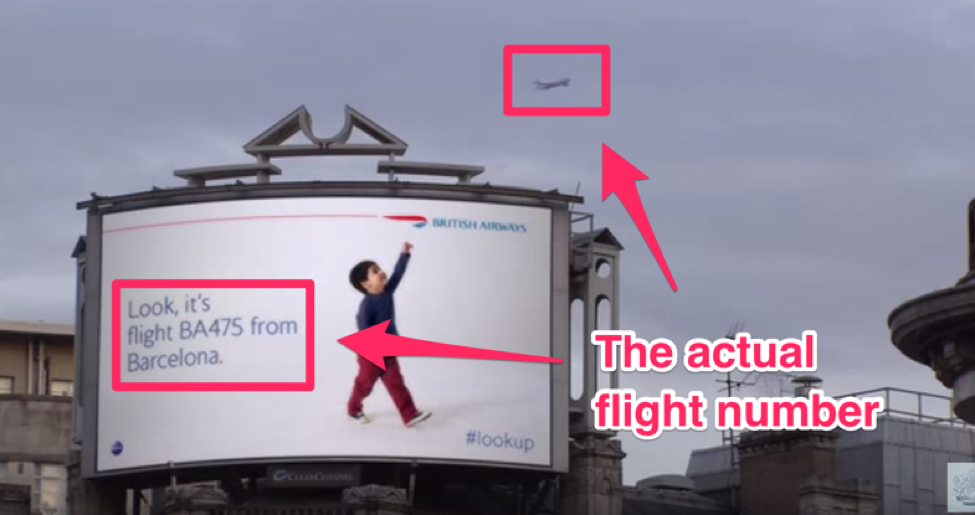
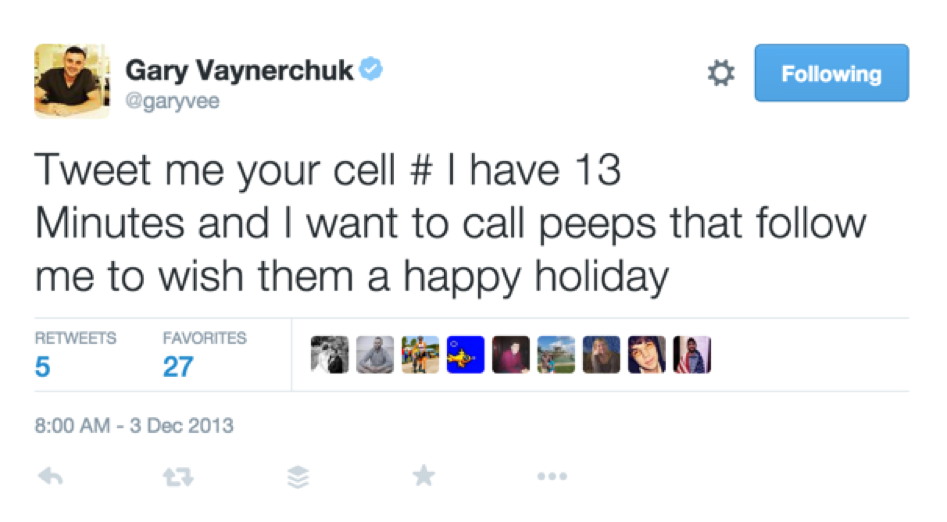
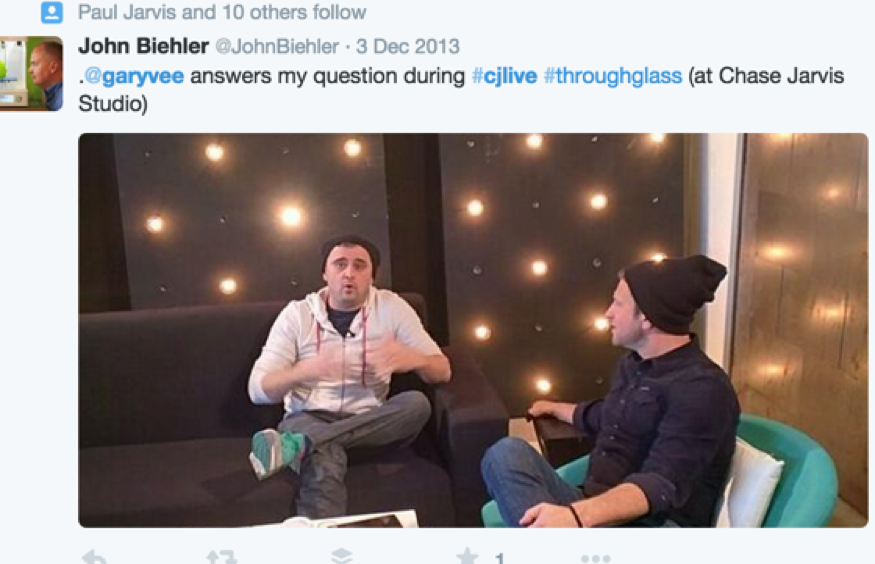
Comments (182)